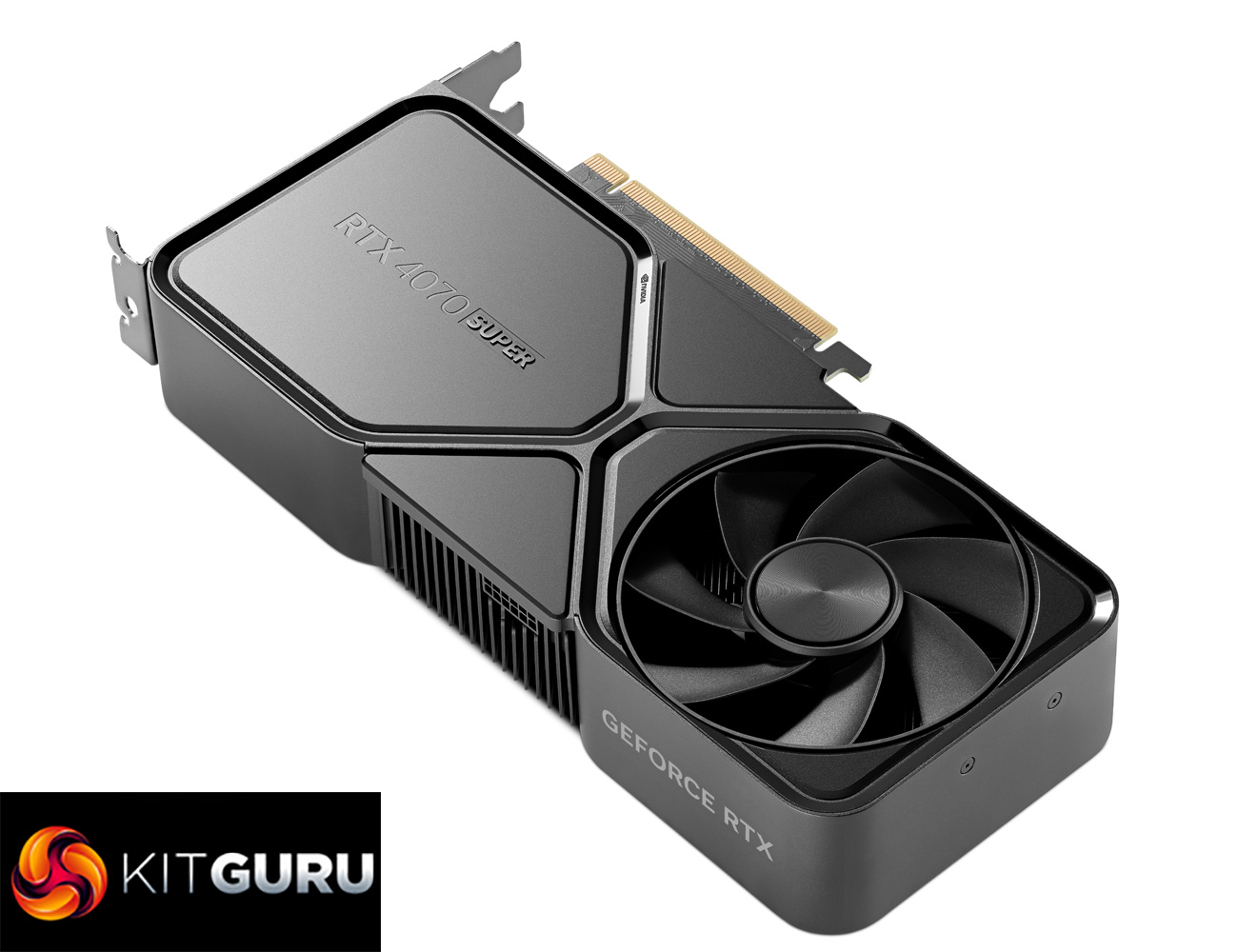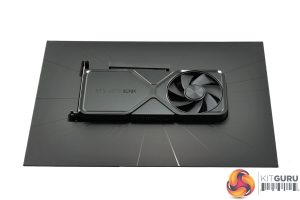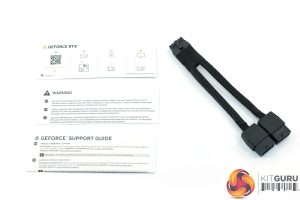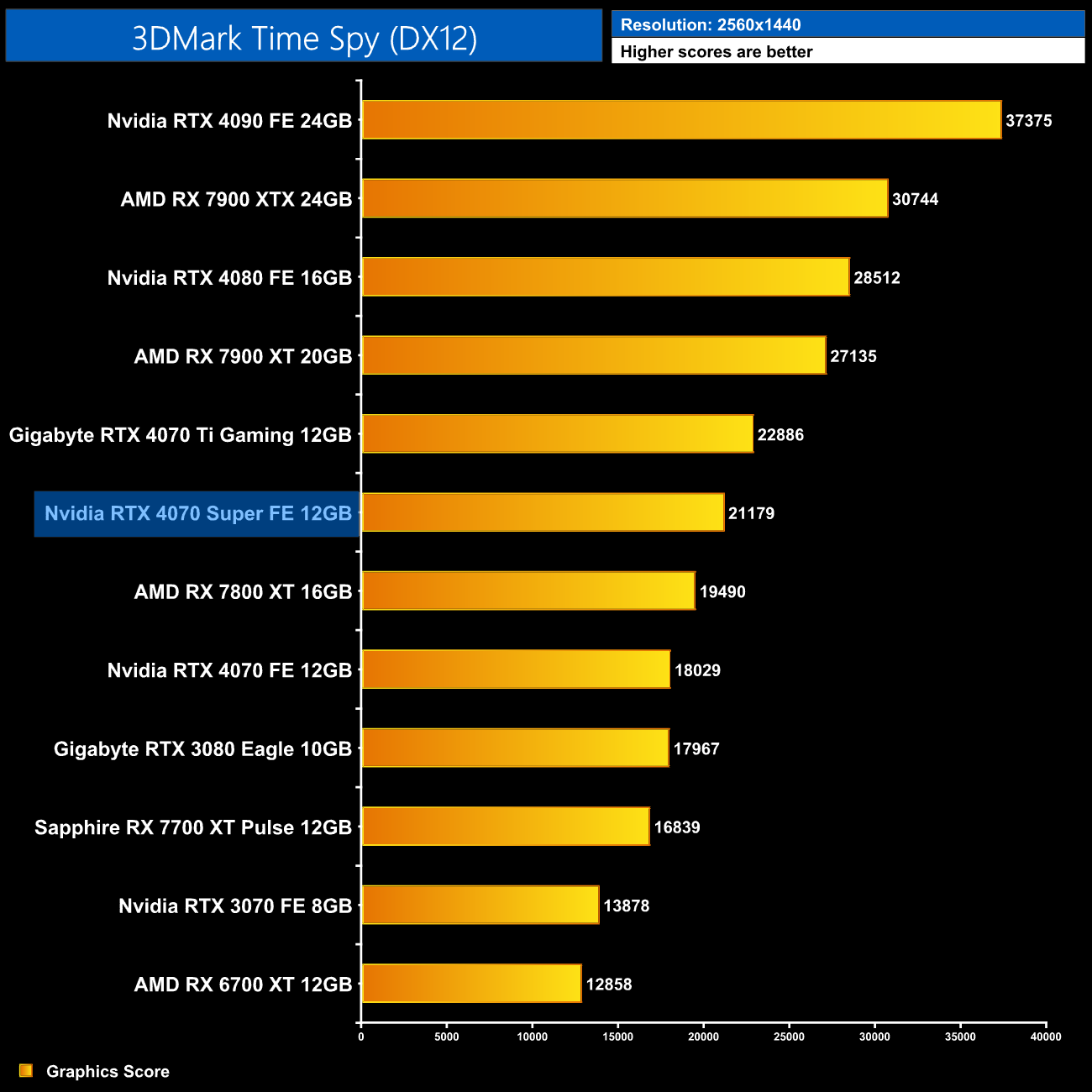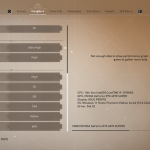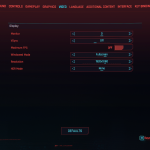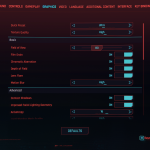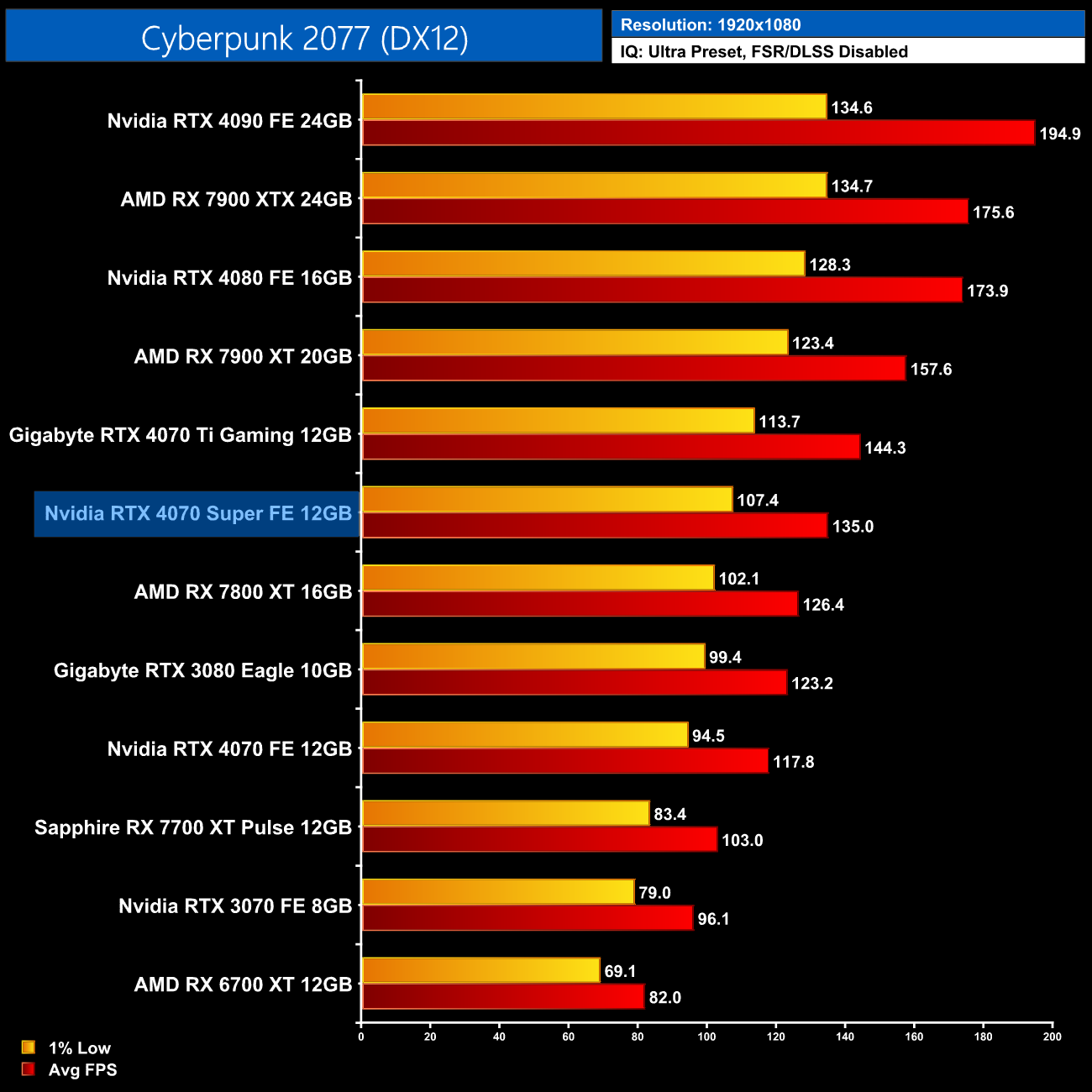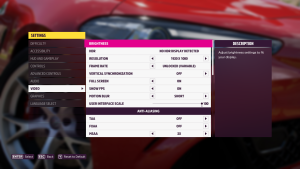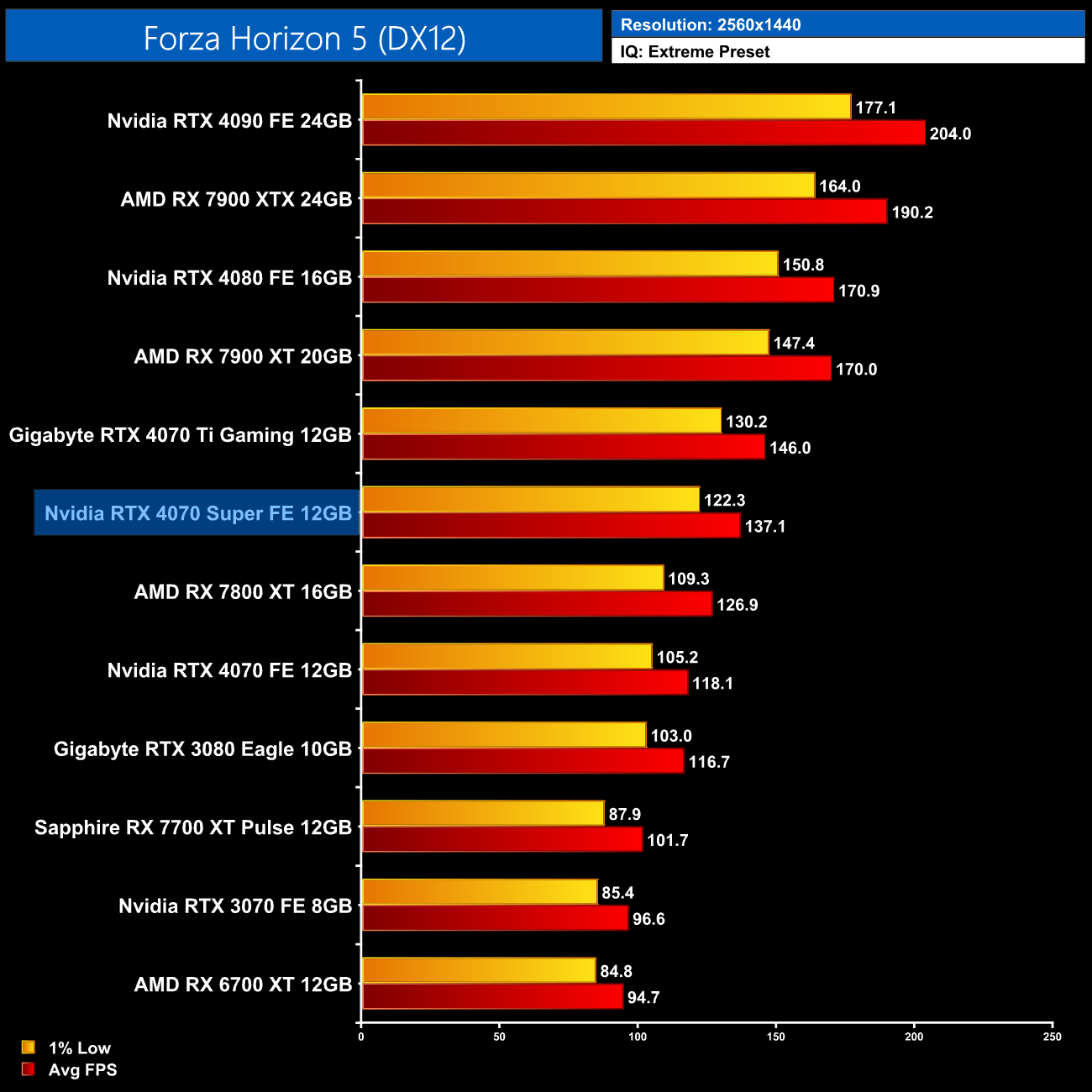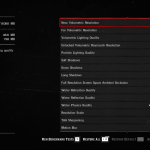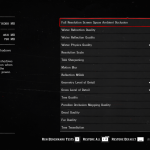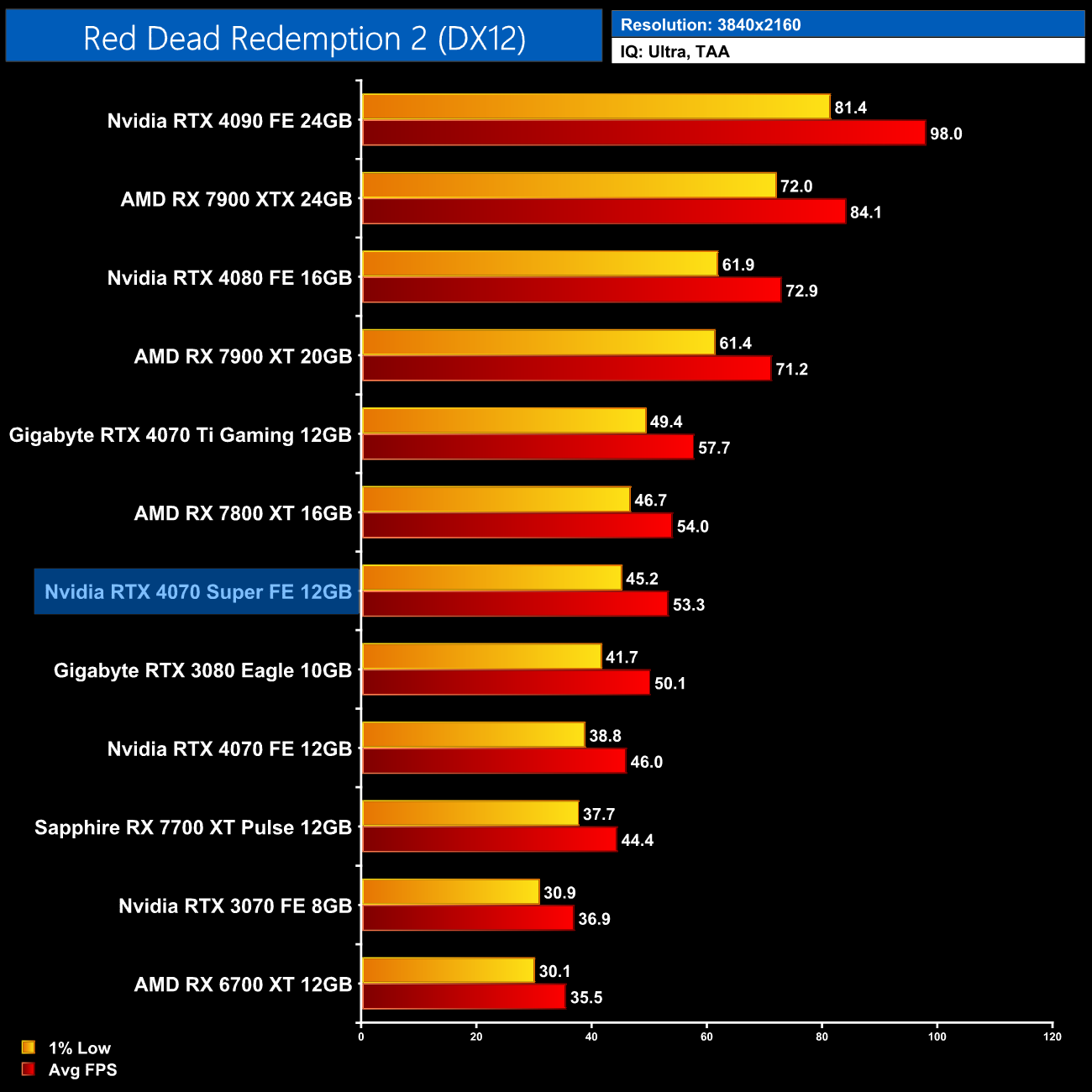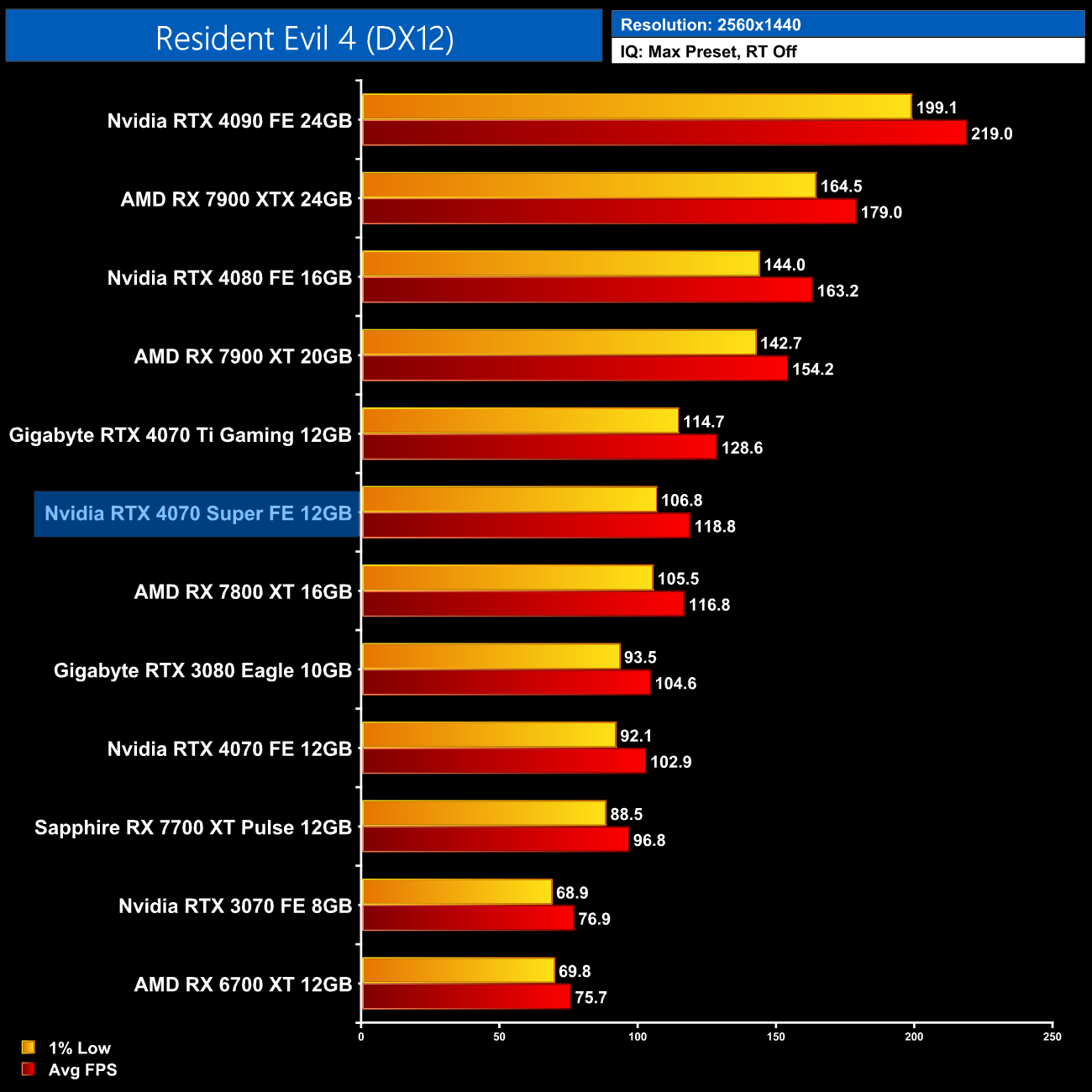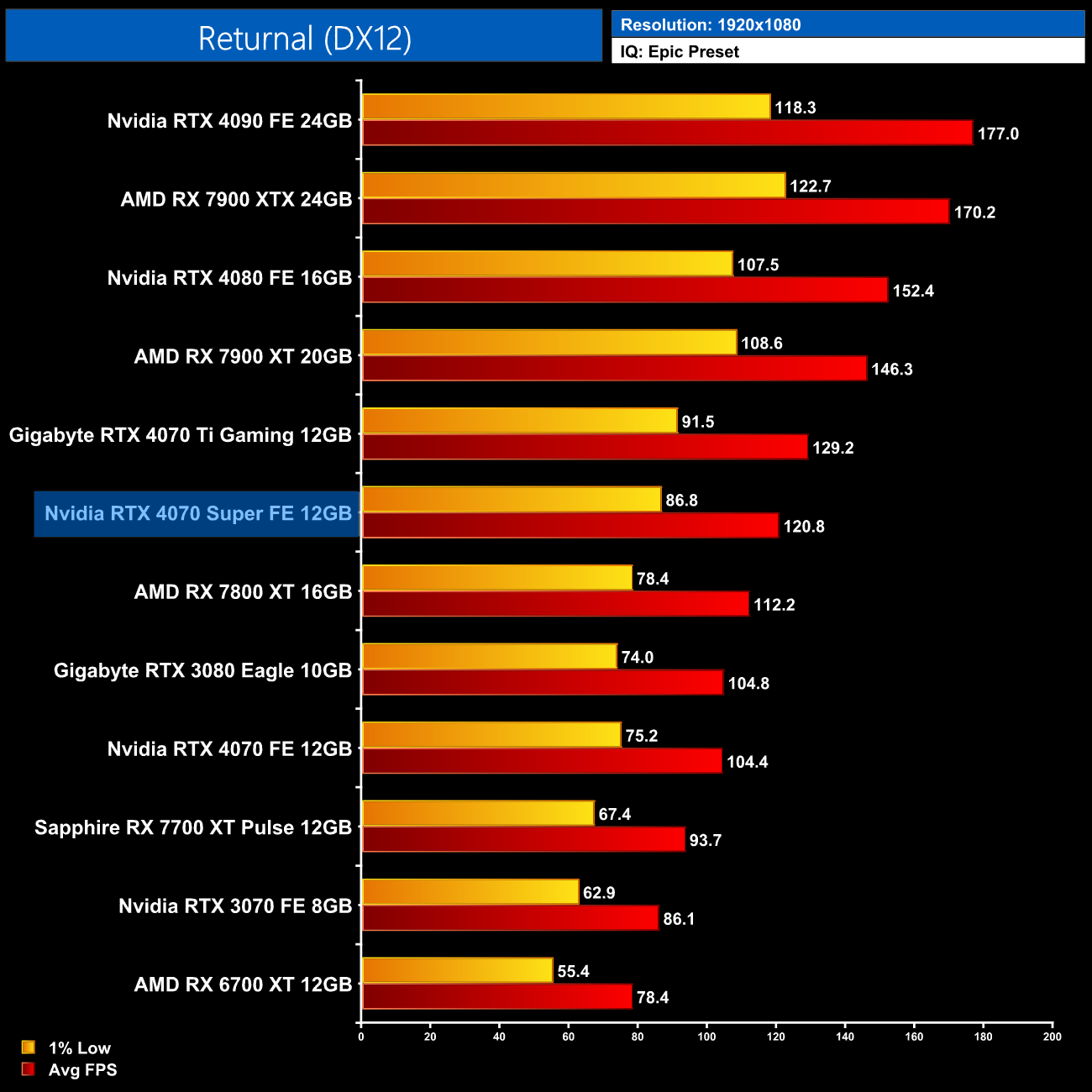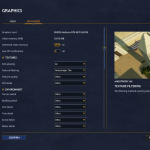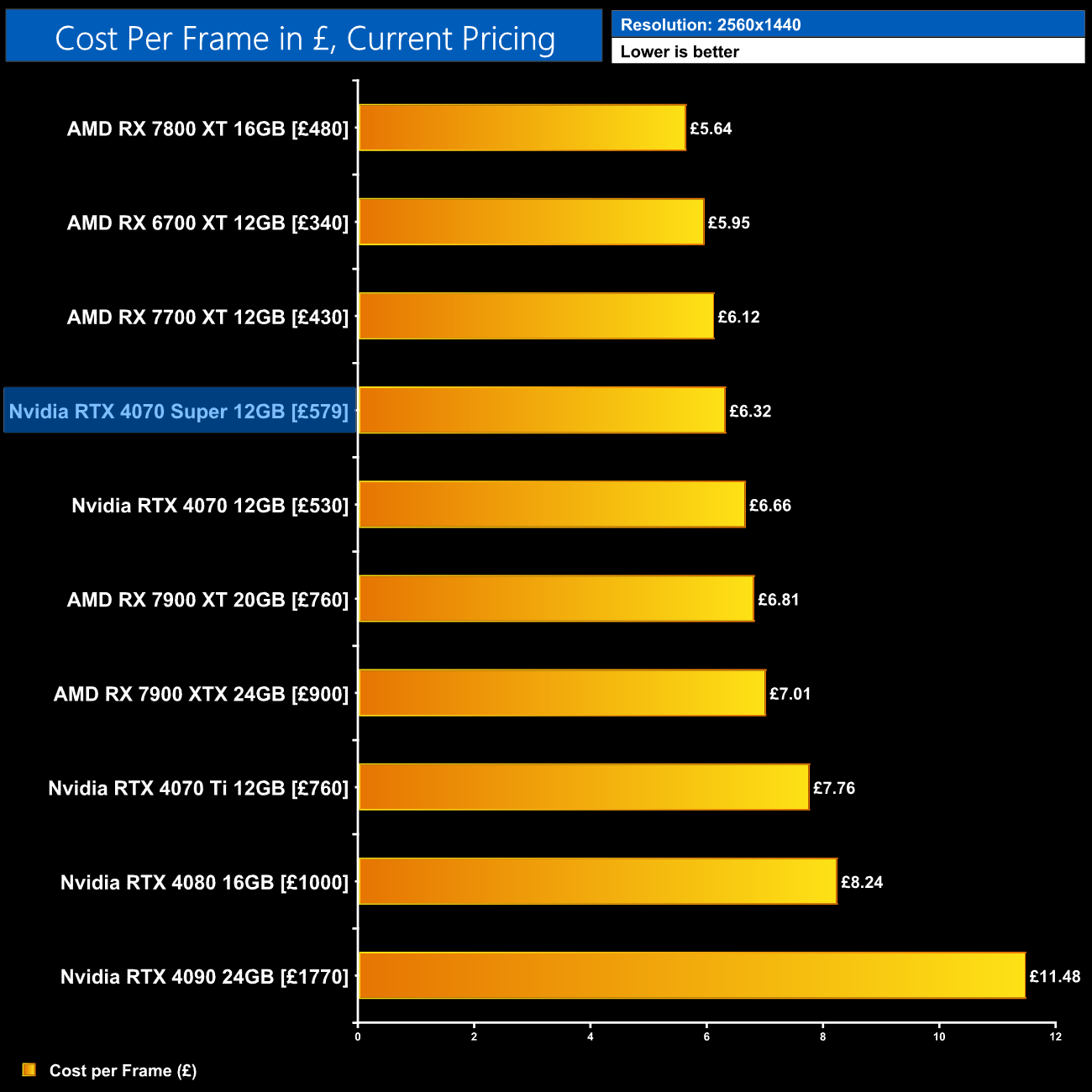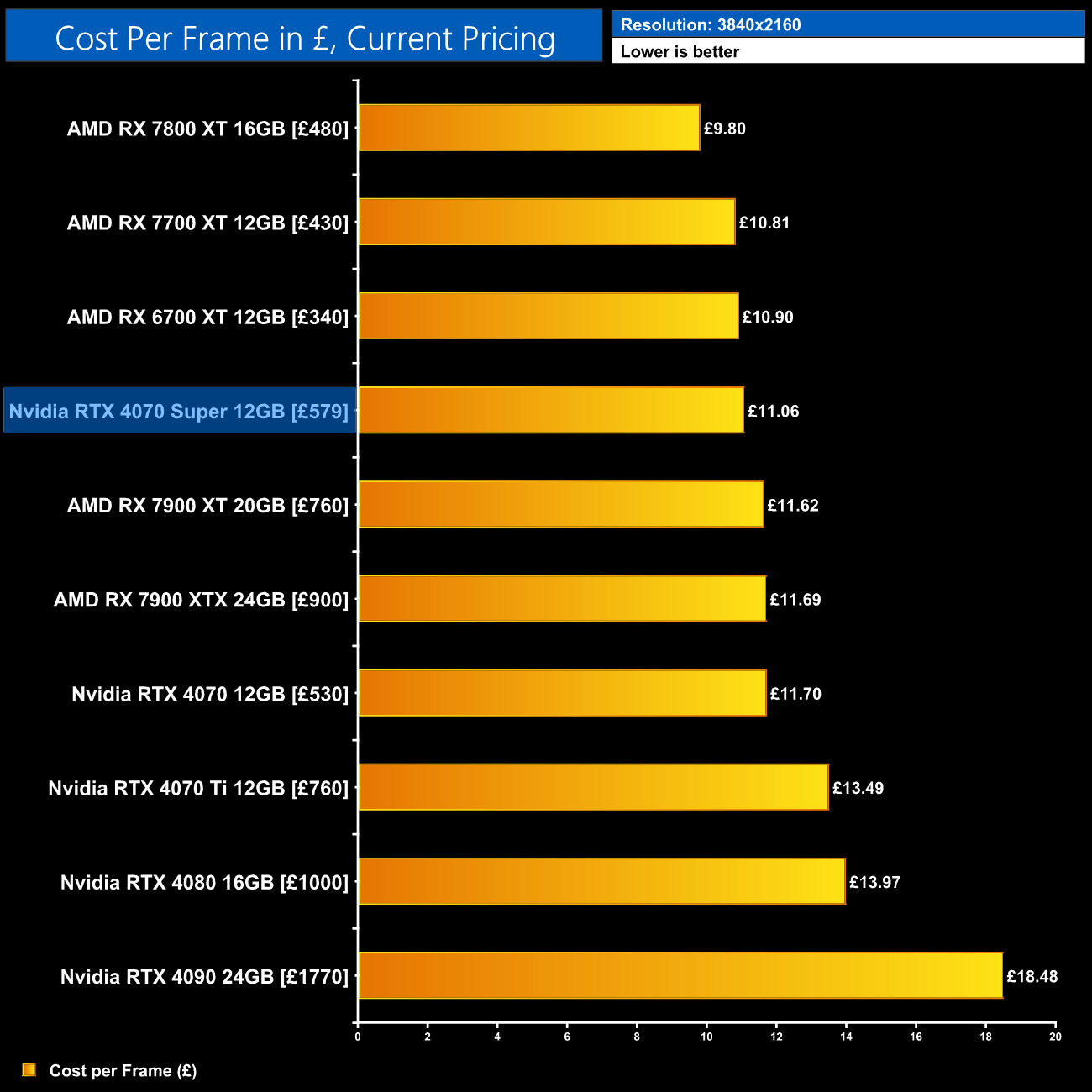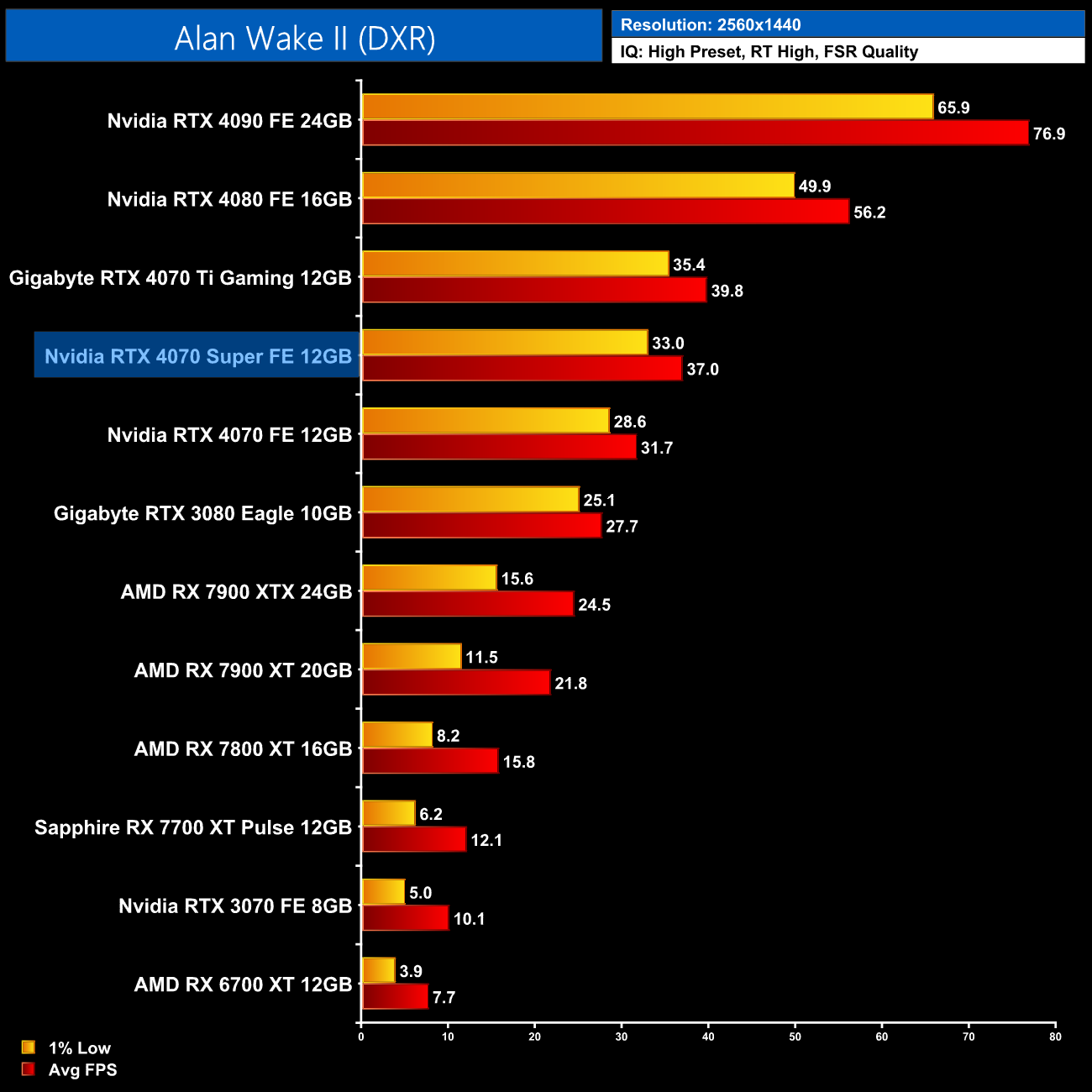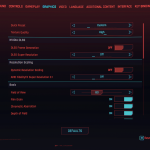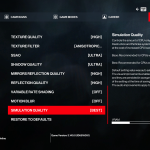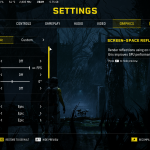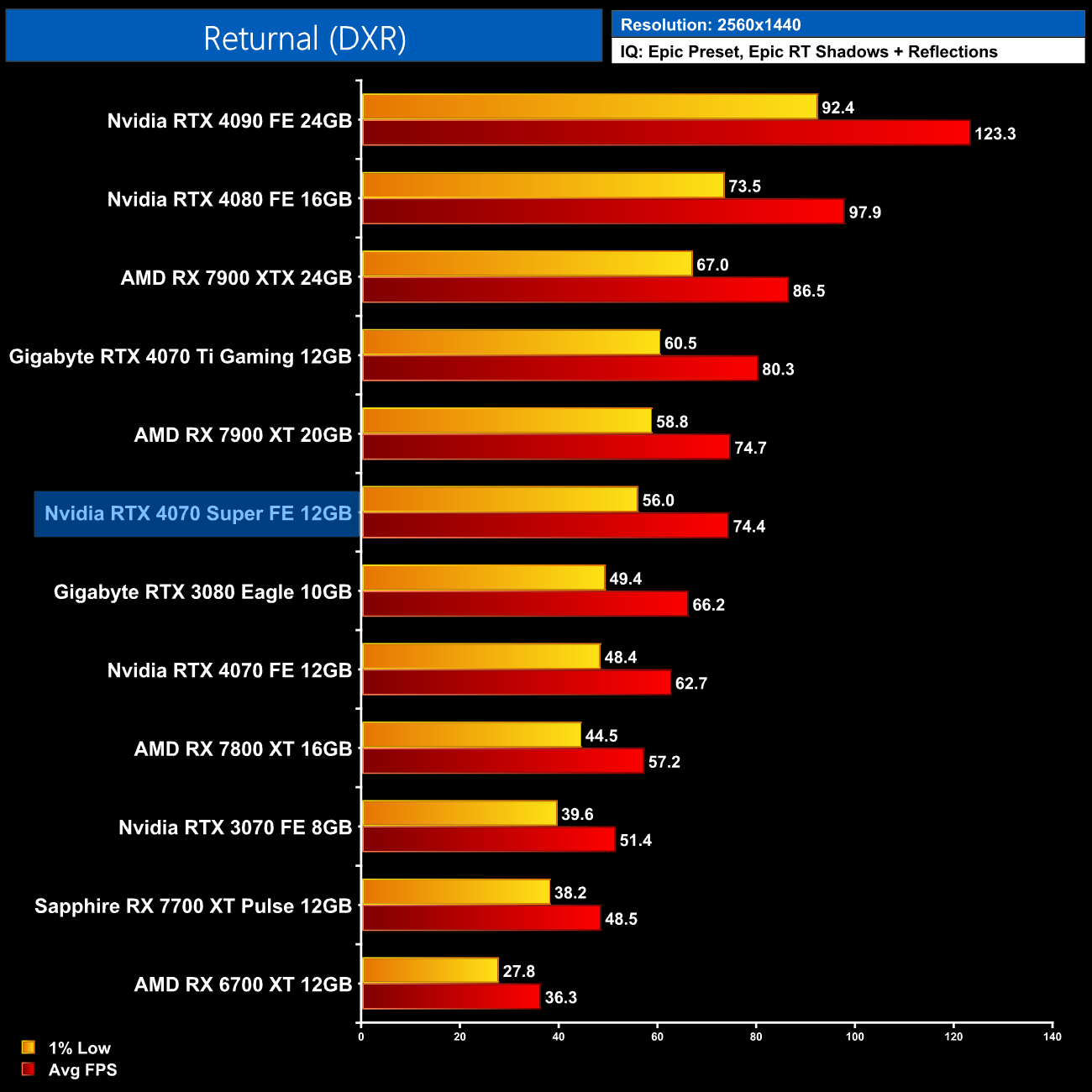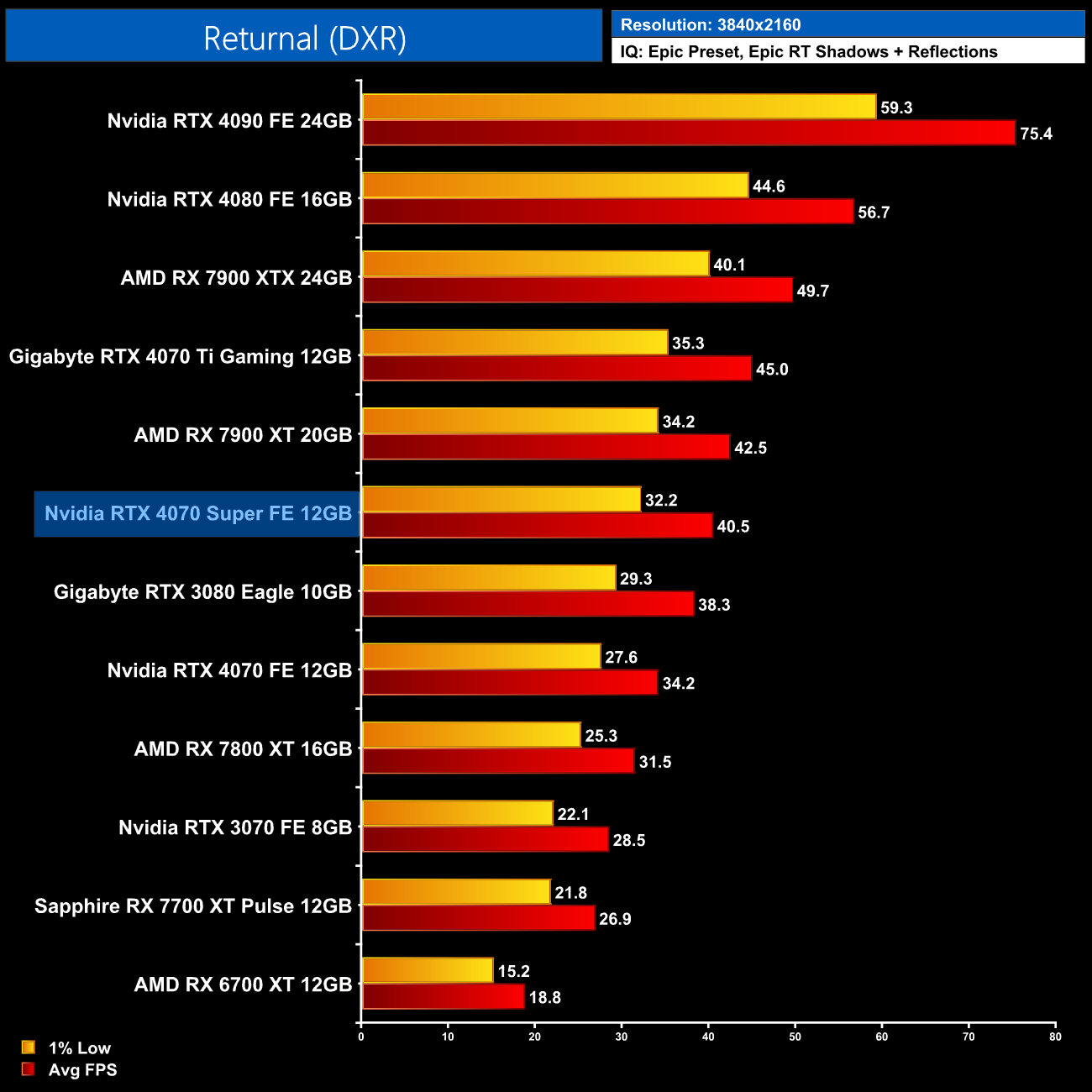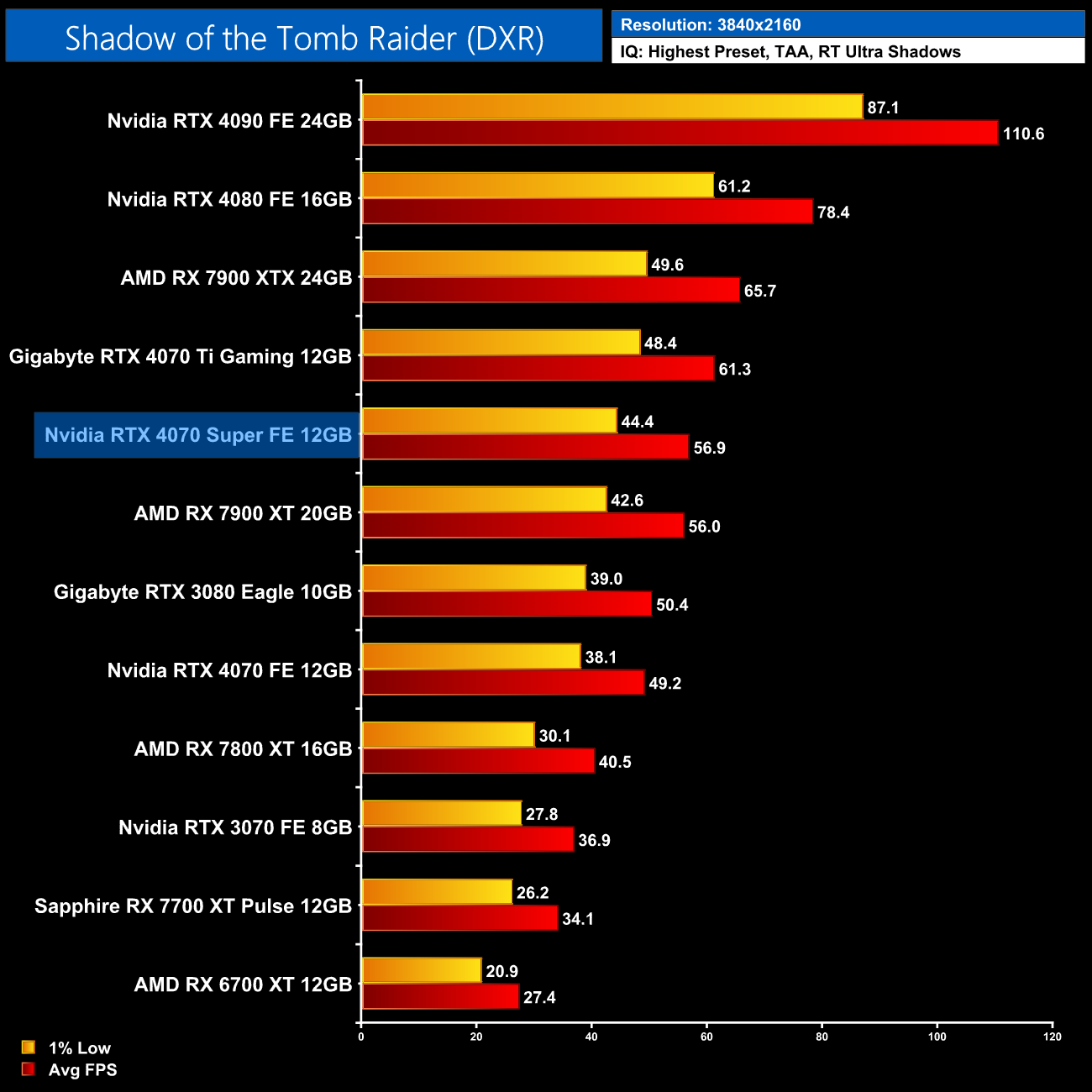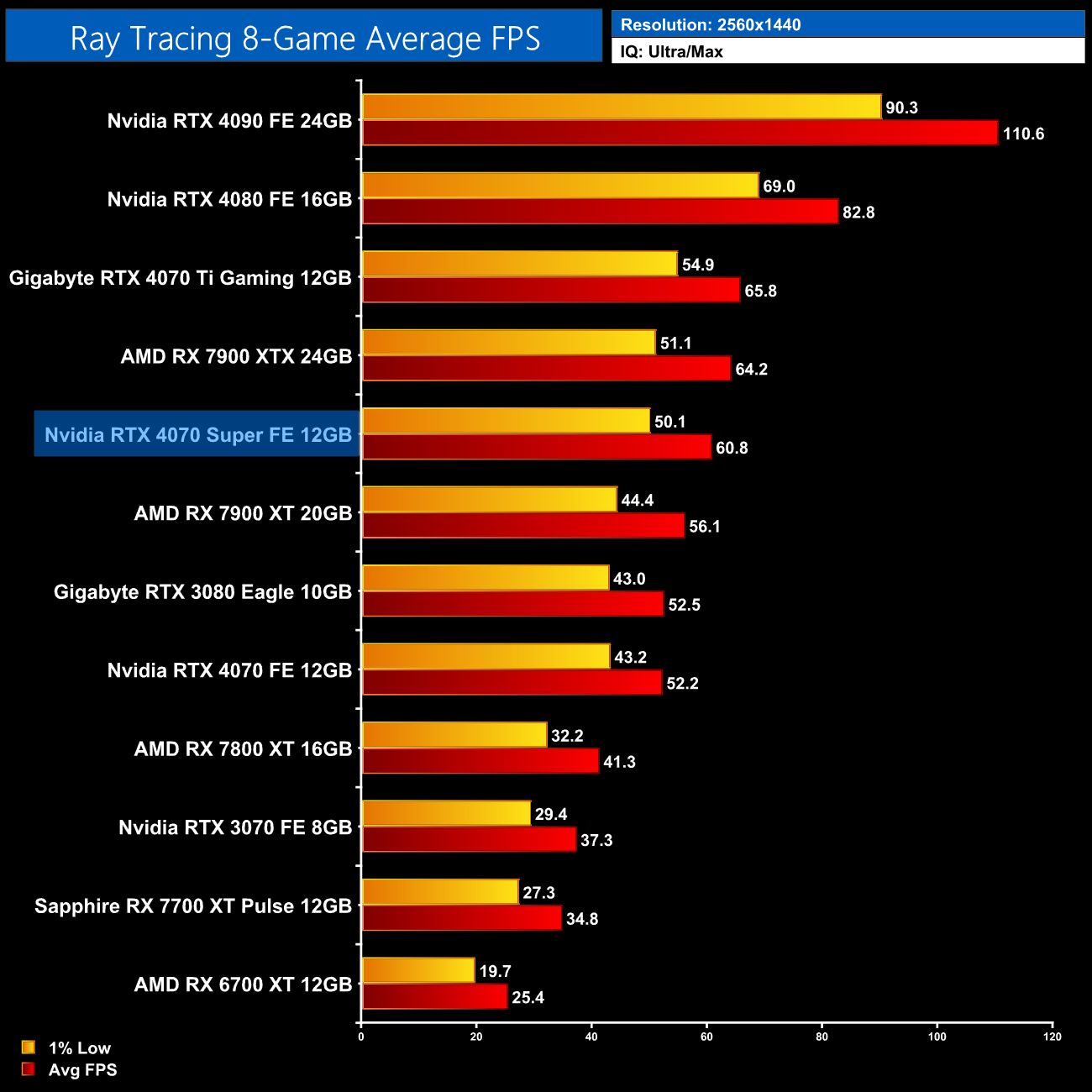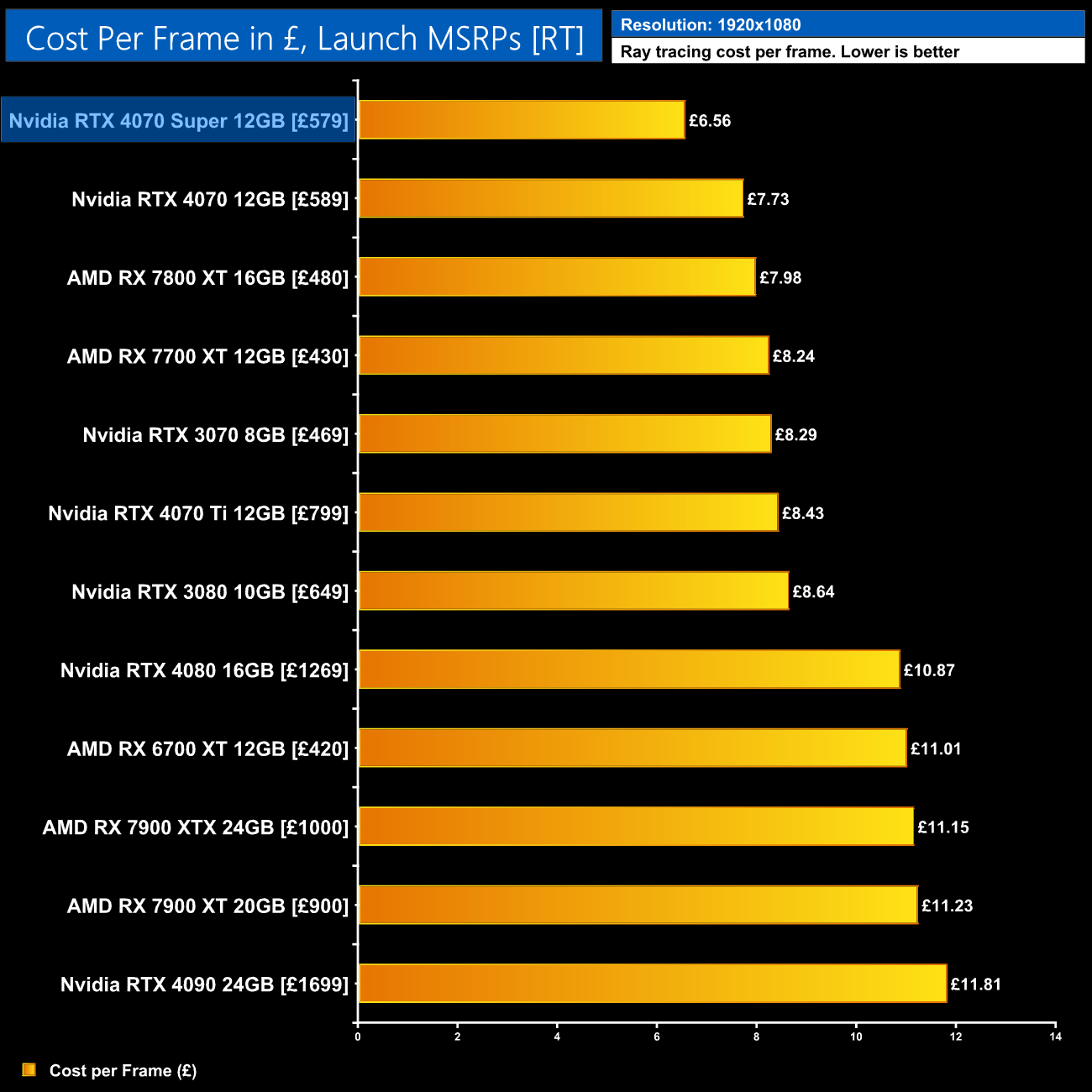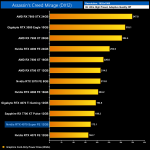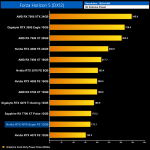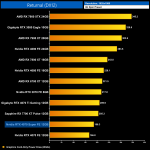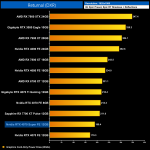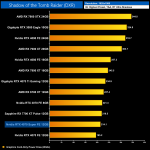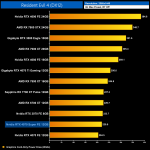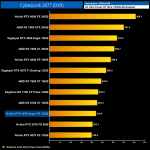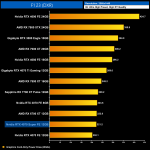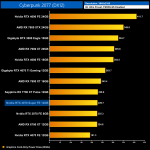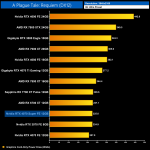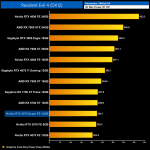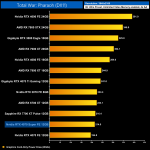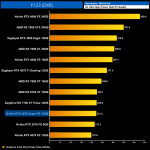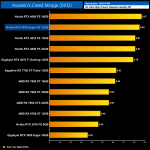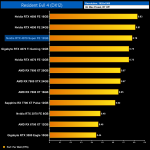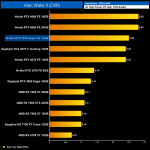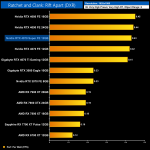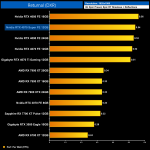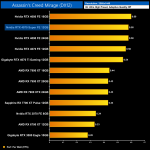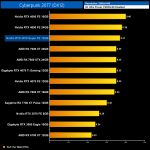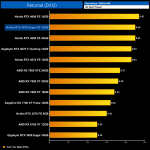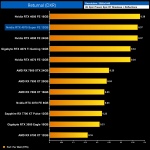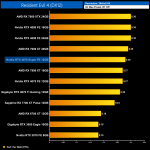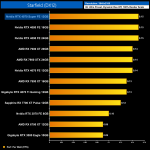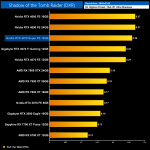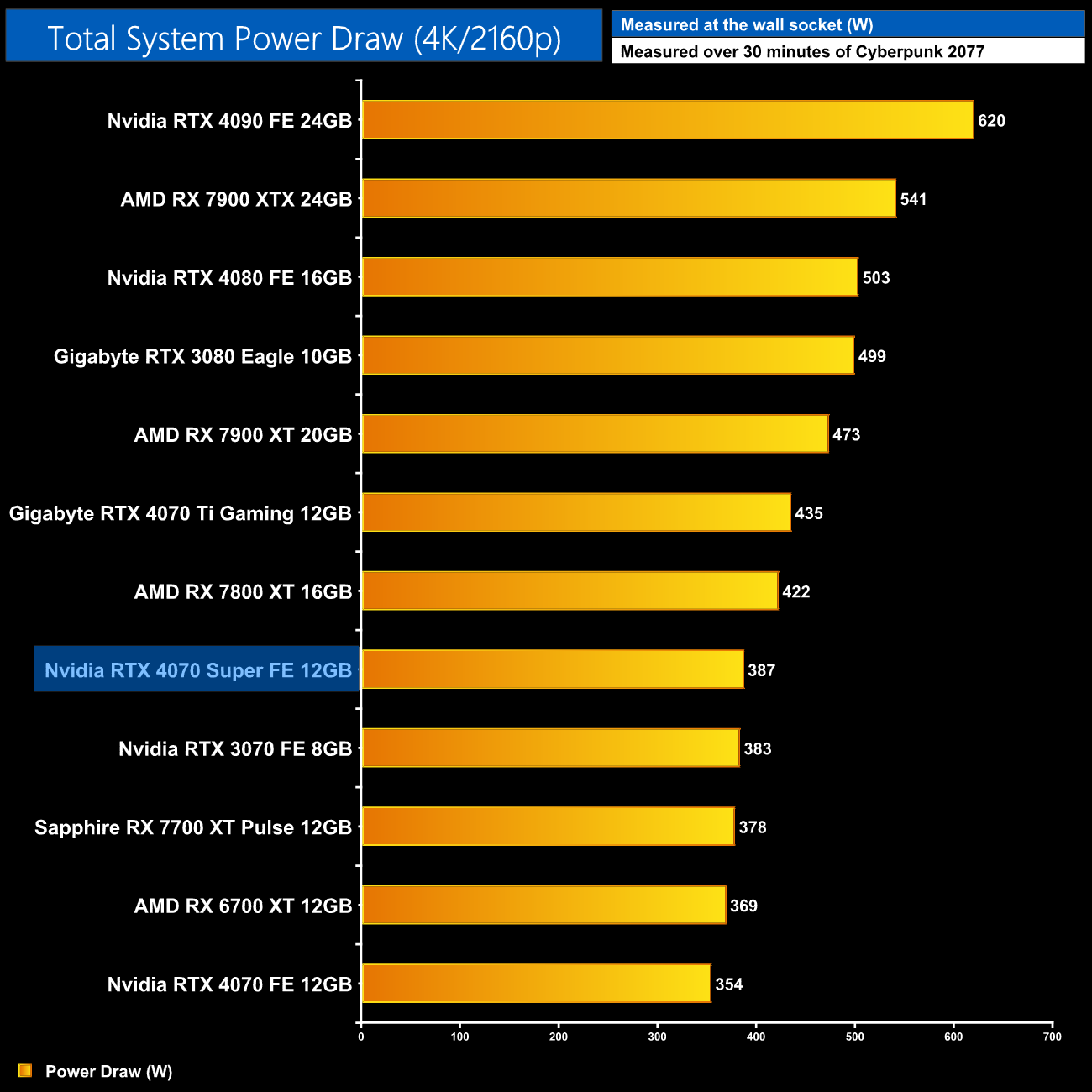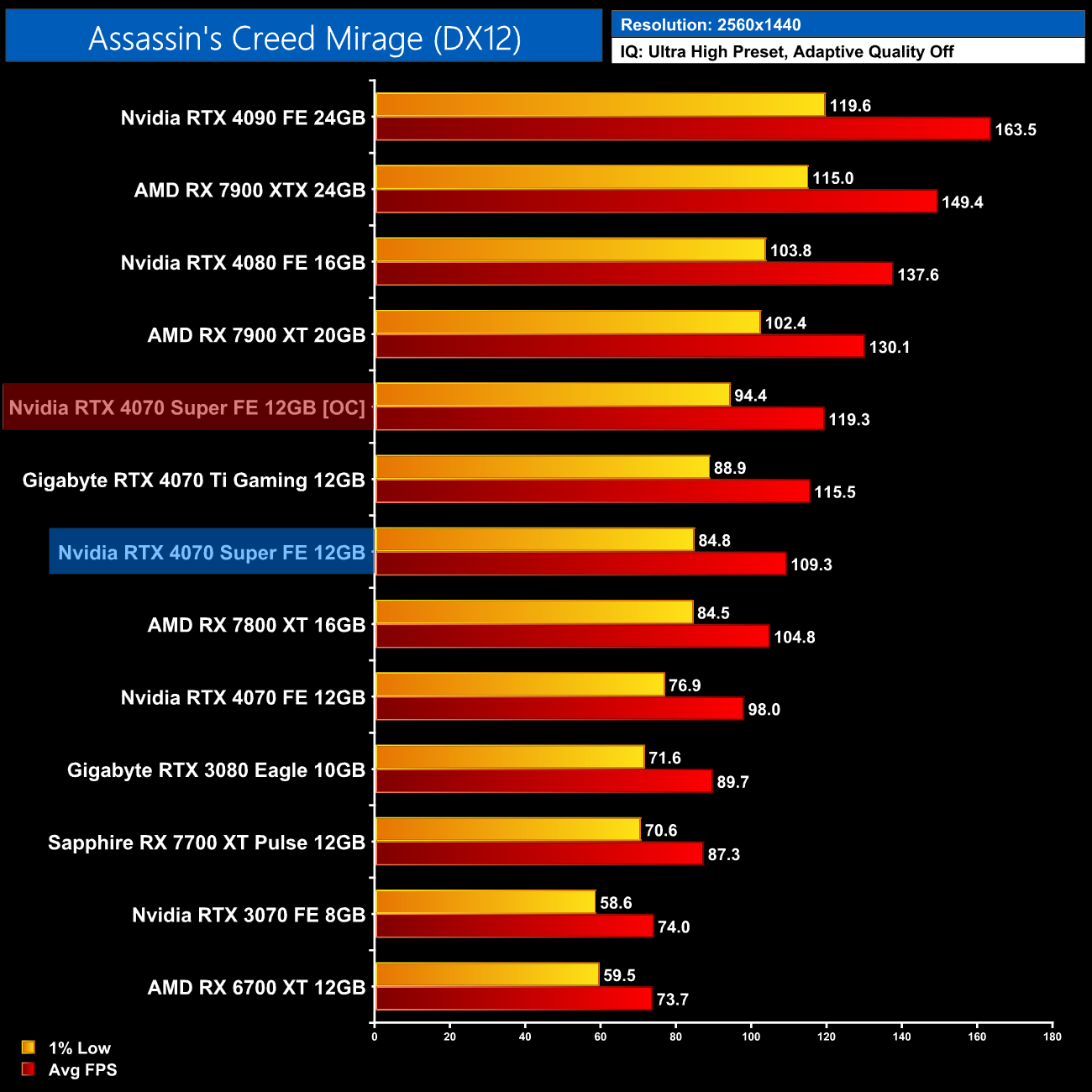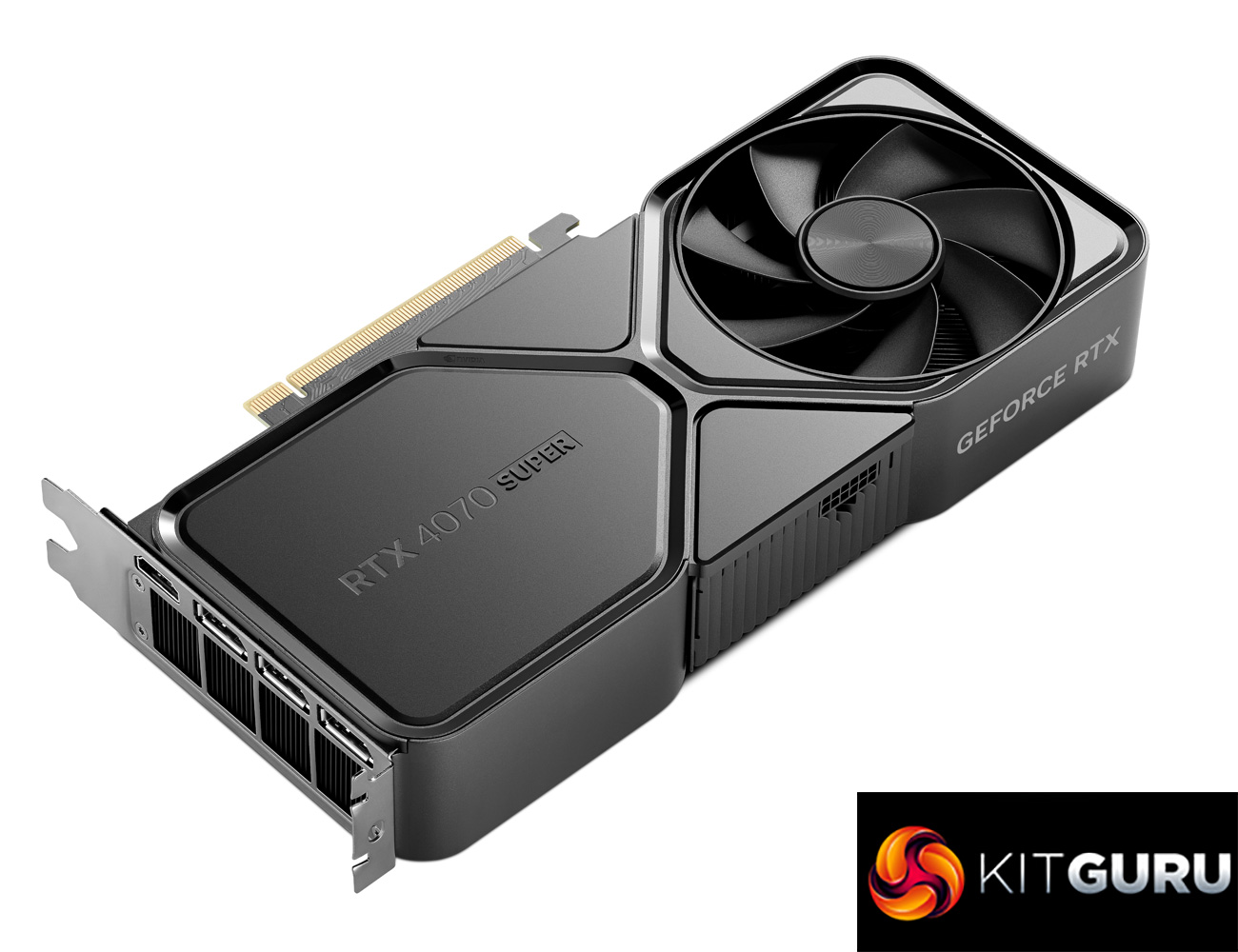
Hot on the heels of its announcement at CES 2024, today we can present our review of Nvidia's RTX 4070 Super GPU. Offering 22% more cores than the original RTX 4070 while arriving at the same price point, on paper this looks like an enticing refresh of what was already considered one of the better RTX 40-series GPUs. Today we find out if the 4070 Super is as good as it sounds, or whether or not there is more to the story…
Casting our minds back to April 2023 and the release of the RTX 4070, at the time we praised the GPU for its efficiency gains and decent performance at 1440p, but it's fair to say we weren't blown away by the generational gains on offer. Fast forward to today and Nvidia is claiming 15% better performance with the new RTX 4070 Super, and at the same price (£579/$599) to boot.
The increased core-count is more-or-less the only change, so if you were hoping for more VRAM or a wider memory interface on a xx70 SKU, then you will have to hold out for the RTX 4070 Ti Super that launches next week. For now though, we have tested the 4070 Super over twelve games, plus another eight with ray tracing, so let's find out how it got on…
If you want to read this review as a single page, click HERE.
| RTX 4090 | RTX 4080 | RTX 4070 Ti | RTX 4070 Super | RTX 4070 | |
| Process | TSMC N4 | TSMC N4 | TSMC N4 | TSMC N4 | TSMC N4 |
| SMs | 128 | 76 | 60 | 56 | 46 |
| CUDA Cores | 16384 | 9728 | 7680 | 7168 | 5888 |
| Tensor Cores | 512 | 304 | 240 | 224 | 184 |
| RT Cores | 128 | 76 | 60 | 56 | 46 |
| Texture Units | 512 | 304 | 240 | 224 | 184 |
| ROPs | 176 | 112 | 80 | 80 | 64 |
| GPU Boost Clock | 2520 MHz | 2505 MHz | 2610 MHz | 2475 MHz | 2475 MHz |
| Memory Data Rate | 21 Gbps | 22.4 Gbps | 21 Gbps | 21 Gbps | 21 Gbps |
| L2 Cache | 73728 KB | 65536 KB | 49152 KB | 49152 KB | 36864 KB |
| Total Video Memory | 24GB GDDR6X | 16GB GDDR6X | 12GB GDDR6X | 12GB GDDR6X | 12GB GDDR6X |
| Memory Interface | 384-bit | 256-bit | 192-bit | 192-bit | 192-bit |
| Memory Bandwidth | 1008 GB/Sec | 716.8 GB/Sec | 504 GB/Sec | 504 GB/Sec | 504 GB/Sec |
| TGP | 450W | 320W | 285W | 220W | 200W |
First, a quick spec recap. Just like the RTX 4070 Ti and RTX 4070, the new 4070 Super uses a cut-down AD104 die, measuring 295mm2. The fundamental building blocks are still the same of course, with the RTX 4070 Super offering a total of 56 Streaming Multiprocessors (SMs), each housing 128 CUDA Cores, for a total of 7168. We also find 56 RT cores, 224 Tensor cores, 224 Texture Units, and 80 ROPs.
TSMC's N4 node has Nvidia cranking up the clock speed significantly this generation, with the RTX 4070 Super sporting the same 2475MHz rated boost clock as the original model. That's still 135MHz slower than the rated clock speed of the RTX 4070 Ti, but we would expect GPU Boost to push things further still.
The memory configuration also remains the same as both the 4070 and 4070 Ti. That means a relatively narrow 192-bit memory interface, so even with 12GB GDDR6X running at 21Gbps, total memory bandwidth comes in at 504 GB/s, lower than the RTX 3070 Ti. That said, there has been a substantial upgrade to the L2 cache with the Ada architecture, with the RTX 4070 now offering 49.1MB, compared to just 6MB for GA102.
Considering the increased core-count, power draw is naturally a touch higher than the RTX 4070, with the 4070 Super boasting a 220W TGP. This is something we focus on closely in this review, using our enhanced GPU power testing methodology, so read on for our most detailed power and efficiency testing yet.
Just like the RTX 4070 Founders Edition we reviewed in April last year, the RTX 4070 Super Founders Edition ships in a fairly plain black box, with barely distinguishable branding on the front. The front of the box opens up to reveal the card sitting in the middle of the cardboard surround.
Inside, we find a few support guides and pieces of documentation, along with a dual 8-pin to 16-pin 12VHPWR adapter.
The design of the 4070 Super Founders Edition (FE) is almost identical to that of the vanilla 4070 FE, but this time Nvidia has gone very stealthy with the overall look – instead of gunmetal grey and silver accents, the 4070 Super has been ‘blacked out' using a combination of matte and glossy metal, and I have to say it looks fantastic.
That really is the only change to the OG 4070 FE, we're told the internal heatsink is exactly the same, and the 4070 Super retains the same 90mm fans in a push-pull configuration. These are still ‘counter rotating', so the fan on the underside of the card spins anti-clockwise, while the fan on the top spins clockwise.
As for dimensions, no change here versus the original 4070, so the card measures in at 244mm long, 112mm tall and is a standard dual-slot thickness. It weighed in on my scales at 1021 grams.
The front side of the card is home to the GeForce RTX logo, though this does not light up once powered on. The backplate is very stealthy and understated, you almost can't read the black RTX 4070 Super text – in my opinion this is the best-looking Founders Edition Nvidia has ever made.
Of course, it is still powered by a single 12VHPWR/PCIe Gen5 power connector, though a dual 8-pin adapter is included in the box. Display outputs are unchanged, with 3x DisplayPort 1.4 and 1x HDMI 2.1 connectors.
Driver Notes
- AMD GPUs were benchmarked with the Adrenalin 23.12.1 driver.
- Nvidia GPUs (except RTX 4070 Super) were benchmarked with the 546.33 driver.
- RTX 4070 Super was benchmarked with the 546.52 driver supplied to press.
Results are only directly comparable where this exact configuration has been used.
Test System:
We test using a custom built system from PCSpecialist, based on Intel’s Rocket Lake platform. You can read more about this system HERE and configure your own PCSpecialist system HERE.
| CPU |
Intel Core i9-13900KS
|
| Motherboard |
Gigabyte Z790 Gaming X AX
|
| Memory |
32GB (2x16GB) Corsair Dominator Platinum RGB DDR5 6000MHz
|
| Graphics Card |
Varies
|
| SSD |
4TB Seagate Firecuda 530 Gen 4 PCIe NVMe
|
| Chassis | Corsair 5000D Airflow Tempered Glass Gaming Case |
| CPU Cooler |
Corsair iCUE H150i Elite RGB High Performance CPU Cooler
|
| Power Supply |
Corsair 1600W Pro Series Titanium AX1600i Digital Modular PSU
|
| Operating System |
Windows 11 23H2
|
| Monitor |
MSI Optix MPG321UR-QD
|
| Resizable BAR |
Enabled for all supported GPUs
|
Comparison Graphics Cards List
- AMD RX 7900 XTX 24GB
- AMD RX 7900 XT 20GB
- AMD RX 7800 XT 16GB
- Sapphire RX 7700 XT Pulse 12GB
- AMD RX 6700 XT 12GB
- Nvidia RTX 4090 FE 24GB
- Nvidia RTX 4080 FE 16GB
- Gigabyte RTX 4070 Ti Gaming 12GB
- Nvidia RTX 4070 FE 12GB
- Gigabyte RTX 3080 Eagle 10GB
- Nvidia RTX 3070 FE 8GB
All cards were tested at reference specifications.
Software and Games List
- 3DMark Fire Strike & Fire Strike Ultra (DX11 Synthetic)
- 3DMark Time Spy (DX12 Synthetic)
- 3DMark DirectX Raytracing feature test (DXR Synthetic)
- Alan Wake II (DX12)
- Assassin's Creed Mirage (DX12)
- Avatar: Frontiers of Pandora (DX12)
- Cyberpunk 2077 (DX12)
- F1 23 (DX12)
- Forza Horizon 5 (DX12)
- Hitman 3 (DX12)
- The Last of Us Part 1 (DX12)
- Marvel's Spider-Man Remastered (DX12)
- A Plague Tale: Requiem (DX12)
- Ratchet and Clank: Rift Apart (DX12)
- Red Dead Redemption 2 (DX12)
- Resident Evil 4 (DX12)
- Returnal (DX12)
- Shadow of the Tomb Raider (DX12)
- Starfield (DX12)
- Total War: Pharaoh (DX11)
We run each benchmark/game three times, and present mean averages in our graphs. We use FrameView to measure average frame rates as well as 1% low values (99th percentile) across our three runs.
Fire Strike is a showcase DirectX 11 benchmark for modern gaming PCs. Its ambitious real-time graphics are rendered with detail and complexity far beyond other DirectX 11 benchmarks and games. Fire Strike includes two graphics tests, a physics test and a combined test that stresses the CPU and GPU. (UL).
3DMark Time Spy is a DirectX 12 benchmark test for Windows 10 gaming PCs. Time Spy is one of the first DirectX 12 apps to be built the right way from the ground up to fully realize the performance gains that the new API offers. With its pure DirectX 12 engine, which supports new API features like asynchronous compute, explicit multi-adapter, and multi-threading, Time Spy is the ideal test for benchmarking the latest graphics cards. (UL).
Our first performance indicators come from 3DMark, where the 4070 Super slots in between the 4070 and 4070 Ti, though it's a good chunk closer to the latter GPU.
Real-time ray tracing is incredibly demanding. The latest graphics cards have dedicated hardware that’s optimized for ray-tracing. The 3DMark DirectX Raytracing feature test measures the performance of this dedicated hardware. Instead of using traditional rendering techniques, the whole scene is ray-traced and drawn in one pass. The result of the test depends entirely on ray-tracing performance. (UL).
3DMark's DXR feature test slots the 4070 Super just 7% behind the RTX 4070 Ti, while it outperforms even the flagship RX 7900 XTX from AMD.
Alan Wake 2 is a 2023 survival horror game developed by Remedy Entertainment and published by Epic Games Publishing. A sequel to Alan Wake, the story follows best-selling novelist Alan Wake, who has been trapped in an alternate dimension for 13 years, as he attempts to escape by writing a horror story involving an FBI special agent named Saga Anderson. The game was released for PlayStation 5, Windows, and Xbox Series X/S on 27 October 2023. (Wikipedia)
Engine: Northlight. We test using the High preset, FSR set to native resolution, DX12 API.
Our first game of the day is a new one for our test suite – it's Alan Wake II and it's quite a tough test even at 1440p. The RTX 4070 Super averages 58FPS, making it just 5% slower than the RTX 4070 Ti, or 18% faster than the vanilla 4070.
4K is unfortunately just too demanding without some form of upscaling, the 4070 Super barely exceeds 30FPS, though it's a lot closer to the 4070 Ti than the original RTX 4070.
Assassin's Creed Mirage is a 2023 action-adventure game developed by Ubisoft Bordeaux and published by Ubisoft. The game is the thirteenth major instalment in the Assassin's Creed series and the successor to 2020's Assassin's Creed Valhalla. Mirage was released for PlayStation 4, PlayStation 5, Windows, Xbox One, and Xbox Series X/S on October 5, 2023. (Wikipedia).
Engine: AnvilNext 2.0. We test using the Ultra High preset, Adaptive Quality disabled, DX12 API.
Assassin's Creed Mirage runs noticeably faster, and at 1440p the 4070 Super is capable of just under 110FPS. Again that makes it just 5% slower than the RTX 4070 Ti, though AMD does well in this game and the 4070 Super is just 4% ahead of the RX 7800 XT.
Stepping up to 4K we still get a very playable 60FPS experience, with the 4070 Super holding a 13% lead over the non-Super RTX 4070. It's also now 6% faster than the RX 7800 XT.
Cyberpunk 2077 is a 2020 action role-playing video game developed and published by CD Projekt. The story takes place in Night City, an open world set in the Cyberpunk universe. Players assume the first-person perspective of a customisable mercenary known as V, who can acquire skills in hacking and machinery with options for melee and ranged combat. Cyberpunk 2077 was released for Microsoft Windows, PlayStation 4, Stadia, and Xbox One on 10 December 2020. (Wikipedia).
Engine: REDengine 4. We test using the Ultra preset, FSR disabled, DX12 API.
Cyberpunk 2077, with the latest 2.1 update, sees the 4070 Super come out neck-and-neck with the RX 7800 XT at 1440p, but we're looking at an 18% gain over the vanilla 4070 and just a 5% deficit compared to the 4070 Ti.
That's much the same at 4K too. Granted you will likely want to enable DLSS in this one as 38FPS isn't super-smooth, but coming in just 6% behind the 4070 Ti is a good result considering the price differential.
Forza Horizon 5 is a 2021 racing video game developed by Playground Games and published by Xbox Game Studios. The twelfth main instalment of the Forza series, the game is set in a fictionalised representation of Mexico. It was released on 9 November 2021 for Microsoft Windows, Xbox One, and Xbox Series X/S. (Wikipedia).
Engine: ForzaTech. We test using the Extreme preset, DX12 API.
Moving onto Forza Horizon 5, the 4070 Super speeds through this one, delivering 137FPS at 1440p, and that's a 16% lead over the RTX 4070. It's also 8% faster than the 7800 XT and 6% slower than the 4070 Ti.
4K sees very similar margins, with the GPU still averaging just below 100FPS, and it's another 18% uplift versus the 4070.
The Last of Us Part I is a 2022 action-adventure game developed by Naughty Dog and published by Sony Interactive Entertainment. A remake of the 2013 game The Last of Us, it features revised gameplay, including enhanced combat and exploration, and expanded accessibility options. It was released for Microsoft Windows in March 2023. (Wikipedia).
Engine: Naughty Dog in-house engine. We test using the Ultra preset, DX12 API.
Next up is The Last of Us Part 1, where the 4070 Super delivers similar performance to the RX 7800 XT, both sitting in the 80FPS region, though the Nvidia GPU has improved by 14% compared to the vanilla 4070.
As for 4K, you would probably want to enable DLSS for this one, but we can still see the 4070 Super coming in just behind the much more expensive RTX 4070 Ti.
A Plague Tale: Requiem is an action-adventure stealth game developed by Asobo Studio and published by Focus Entertainment. It is the sequel to A Plague Tale: Innocence (2019), and follows siblings Amicia and Hugo de Rune who must look for a cure to Hugo's blood disease in Southern France while fleeing from soldiers of the Inquisition and hordes of rats that are spreading the black plague. The game was released for Nintendo Switch, PlayStation 5, Windows, and Xbox Series X/S on 18 October 2022. (Wikipedia).
Engine: Asobo Studio in-house engine. We test using the Ultra preset, DX12 API.
A Plague Tale: Requiem is next and this is one of the more demanding games we test. At 1440p the RTX 4070 Super is capable of 74FPS, which makes it 16% faster than the 4070, 9% slower than the 4070 Ti but 13% faster than the RX 7800 XT.
Up at 4K, the 4070 Super does drop off a touch relative to the 7800 XT, as it's now just 7% faster compared to its 13% lead at 1440p. We can put this down to the fact it still shares the same relatively narrow 192-bit memory interface as the 4070 and 4070 Ti, so performance does tend to tail off slightly at higher resolutions.
Ratchet & Clank: Rift Apart is a 2021 third-person shooter platform game developed by Insomniac Games and published by Sony Interactive Entertainment for the PlayStation 5. It is the ninth main installment in the Ratchet & Clank series and a sequel to Ratchet & Clank: Into the Nexus. Rift Apart was announced in June 2020 and was released on June 11, 2021. A Windows port by Nixxes Software was released on July 26, 2023. (Wikipedia).
Engine: Insomniac Games in-house engine. We test using the Very High preset, DX12 API.
As for Ratchet and Clank, Nvidia GPUs still struggle with the 1% lows in this game, which we had previously heard was due to the game's DirectStorage implementation. A workaround is possible but we test without modifying any game files. At 1440p for instance, the 4070 Super is 21% faster than the RX 7800 XT on average, but barely any faster in terms of the 1% lows.
This does improve at 4K however, where the 4070 Super is 22% faster than the 7800 XT on average but now 15% ahead in terms of the 1% lows. We're again looking at a boost in the 12% region relative to the vanilla 4070.
Red Dead Redemption 2 is a 2018 action-adventure game developed and published by Rockstar Games. The game is the third entry in the Red Dead series and is a prequel to the 2010 game Red Dead Redemption. Red Dead Redemption 2 was released for the PlayStation 4 and Xbox One in October 2018, and for Microsoft Windows and Stadia in November 2019. (Wikipedia).
Engine: Rockstar Advance Game Engine (RAGE). We test by manually selecting Ultra settings (or High where Ultra is not available), TAA, DX12 API.
Red Dead Redemption 2 is one of my personal favourites and the 4070 Super does well here, delivering a 16% lead over the 4070, while it's 6% slower than the 4070 Ti and dead level with the 7800 XT.
For 4K you still get a reasonable 53FPS on average, and we're again looking at a 16% gain over the 4070, though the new Super card is now 8% slower than the 4070 Ti.
Resident Evil 4 is a 2023 survival horror game developed and published by Capcom. It is a remake of the 2005 game Resident Evil 4. Players control the US agent Leon S. Kennedy, who must save Ashley Graham, the daughter of the United States president, from the mysterious Los Illuminados cult. Resident Evil 4 was announced in June 2022 and released on PlayStation 4, PlayStation 5, Windows, and Xbox Series X/S on March 24, 2023.
Engine: RE Engine. We test using the Max preset with ray tracing disabled, DX12 API.
Resident Evil 4 is one of the most performant games we test, and at 1440p using maximum settings (bar ray tracing), the 4070 Super delivers almost 120FPS, putting it 16% ahead of the 4070 while it's 8% slower than the 4070 Ti.
Up at 4K, we see the exact same margins on offer. The only other noteworthy point is that this is the only game where we saw the 4070 Super come in slower than the RX 7800 XT, admittedly by just a 5% margin.
Returnal is a 2021 roguelike video game developed by Housemarque and published by Sony Interactive Entertainment. It was released for the PlayStation 5 on April 30, 2021 and Windows on February 15, 2023. The game follows Selene Vassos, an astronaut who lands on the planet Atropos in search of the mysterious “White Shadow” signal and finds herself trapped in a time loop. (Wikipedia).
Engine: Unreal Engine 4. We test using the Epic preset with ray tracing disabled, DX12 API.
Returnal sees the 4070 Super restore a healthy lead over the RX 7800 XT, as it's average frame rate of 90FPS gives it a 9% advantage over the AMD GPU. We can also see a healthy 18% boost over the 4070, and an 8% deficit compared to the 4070 Ti.
As for 4K, those margins stay fairly consistent, apart from the fact that the 4070 Super is now 11% faster than the 7800 XT, compared to its 9% lead at 1440p.
Starfield is a 2023 action role-playing game developed by Bethesda Game Studios and published by Bethesda Softworks. Announced in 2018, Starfield was delayed several times. The game was released for Windows and Xbox Series X/S on September 6, 2023. (Wikipedia).
Engine: Creation Engine 2. We test using the Ultra preset, with 100% resolution scale, dynamic resolution disabled, DX12 API.
Starfield is another new game to join our suite and boy is it demanding in our chosen benchmark area in the forest on Jemison. At 1440p the 4070 Super manages just 51FPS, though that does make it 17% faster than the 4070 and about level with the RX 7800 XT.
As for 4K, the 1% lows do drop below 30FPS, so you will want to enable some form of upscaling, though again we're looking at a 16% uplift versus the 4070, while the 4070 Super is 8% behind the 4070 Ti.
Total War: Pharaoh is a turn-based strategy real-time tactics video game developed by Creative Assembly Sofia and published by Sega. Part of the Total War series, Pharaoh is set in the New Kingdom of Egypt and its surrounding areas before the Late Bronze Age collapse. The game was released for Windows PC on October 11, 2023. (Wikipedia).
Engine: TW Engine 3 (Warscape). We test using the Ultra preset, 4X AA, with unlimited video memory enabled, DX11 API.
Lastly, we close out with Total War: Pharaoh. This one sees the 4070 Super hit 109FPS at 1440p where it is only 10% slower than the RX 7900 XT, or just 5% behind the 4070 Ti.
Likewise, at 4K, we can see the 4070 Super delivering a 15% lead over the vanilla 4070, so it's only 5% slower than the 4070 Ti, but over 20% faster than the 7800 XT.
Here we present frame rate figures for each graphics card, averaged across all 12 games on test today. These figures can disguise significant variations in performance from game to game, but provide a useful overview of the sort of performance you can expect at each resolution tested.
After 12 games, the results are pretty much what we expected given the specs – the RTX 4070 Super slots between the original RTX 4070 and the RTX 4070 Ti, though it is much closer to the latter GPU than it is the former. That's because, at 1440p, it is on average 15% faster than the 4070 but just 6% slower than the 4070 Ti. That also makes it 8% faster than the RX 7800 XT, 13% ahead of the RTX 3080 10GB, but still 18% slower than the RX 7900 XT.
4K gaming isn't out of the question either, where the 4070 Super is 16% faster than the 4070 and 7% slower than the 4070 Ti. It's also 7% faster than the 7800 XT here, and 10% ahead of the RTX 3080 10GB.
The MSRPs
Using the average frame rate data presented earlier in the review, here we look at the cost per frame using the UK MSRP launch prices for each GPU.
As we'd expect, a circa ~15% performance uplift for effectively the same price as the original RTX 4070 (or £10 less for UK buyers) means the cost per frame of the 4070 Super has improved a fair bit – it represents a 15% reduction in cost per frame versus the 4070 when looking at the 1440p data, and closes the gap on the RX 7800 XT quite significantly – though it isn't able to fully catch up with the AMD GPU.
Current retail pricing
Of course, current retail pricing can vary a fair bit compared to the MSRPs, but even then, if the 4070 Super can come to market at the £579 asking price, it's value is still going to be very competitive. It's also worth pointing out that in many cases the 7800 XT's value won't be as good as what's shown here as it's been selling above MSRP quite consistently since its launch, and only in the last week or so did I see a reference model drop back to MSRP.
Alan Wake 2 is a 2023 survival horror game developed by Remedy Entertainment and published by Epic Games Publishing. A sequel to Alan Wake, the story follows best-selling novelist Alan Wake, who has been trapped in an alternate dimension for 13 years, as he attempts to escape by writing a horror story involving an FBI special agent named Saga Anderson. The game was released for PlayStation 5, Windows, and Xbox Series X/S on 27 October 2023. (Wikipedia)
Engine: Northlight. We test using the High preset, High Ray Tracing preset, FSR set to Quality upscaling, DXR API.
Starting our look at ray tracing with Alan Wake II, using the RT High preset does engage path tracing – which is hugely demanding – so we have enabled FSR Quality for all GPUs today. Even then, at 1440p the 4070 Super is only capable of 37FPS, though that still makes it 17% faster than the RTX 4070 and 7% slower than the 4070 Ti. Compared to AMD's offerings, Nvidia GPUs are in a different class here.
Avatar: Frontiers of Pandora is a 2023 open world action-adventure game based on the Avatar film series, developed by Massive Entertainment and published by Ubisoft. The game was released for Amazon Luna, PlayStation 5, Windows, and Xbox Series X/S on December 7, 2023. (Wikipedia).
Engine: Snowdrop. We test using the Ultra preset, TAA, DXR API. DLSS/FSR are disabled.
Avatar: Frontiers of Pandora is another new game today that has ray tracing baked into the core of the engine. The 4070 Super delivers 57FPS, and that's a typical 16% uplift versus the RTX 4070. It's also 35% faster than the 7800 XT, and only a handful of frames slower than the 7900 XT.
Cyberpunk 2077 is a 2020 action role-playing video game developed and published by CD Projekt. The story takes place in Night City, an open world set in the Cyberpunk universe. Players assume the first-person perspective of a customisable mercenary known as V, who can acquire skills in hacking and machinery with options for melee and ranged combat. Cyberpunk 2077 was released for Microsoft Windows, PlayStation 4, Stadia, and Xbox One on 10 December 2020. (Wikipedia).
Engine: REDengine 4. We test using the Ray Tracing: Ultra preset, DXR API. DLSS/FSR are disabled.
As for Cyberpunk 2077, we're on using the RT Ultra preset here – not the path-traced RT Overdrive mode – but it's still very punishing, bringing the 4070 Super to just 43FPS on average without any form of upscaling. That still makes it faster than the RX 7900 XTX though, and it's the usual 17% faster than the 4070.
F1 23 is a racing video game developed by Codemasters and published by EA Sports. It is the sixteenth entry in the F1 series by Codemasters. It holds the official licence for the 2023 Formula One and Formula 2 championships. The game was released for Microsoft Windows, PlayStation 4, PlayStation 5, Xbox One, Xbox Series X/S, and Linux (through Valve's Proton compatibility layer) on 16 June 2023. (Wikipedia).
Engine: EGO. We test using the Ultra High preset, High ray tracing quality, DXR API. DLSS/FSR are disabled.
F1 23 is more competitive for AMD GPUs, but even then we are looking at the 4070 Super coming in 25% faster than the 7800 XT at 1440p, while it's only 8% behind the RX 7900 XT. Versus the 4070 Ti, it's 9% slower here.
Hitman 3 is a 2021 stealth game developed and published by IO Interactive. Hitman 3 was released worldwide for PlayStation 4, PlayStation 5, Windows, Xbox One, Xbox Series X/S, Stadia, and Nintendo Switch (via cloud gaming) on 20 January 2021. (Wikipedia).
Engine: Glacier. We test using Ultra settings, RT Reflections, RT Shadows, DXR API. DLSS/FSR are disabled.
Hitman 3 is surprisingly punishing, despite only featuring ray traced shadow and reflections. At 1440p, the 4070 Super is still 17% faster than the 4070 and 7% slower than the 4070 Ti, but it's more or less equal to the RX 7900 XT, and 30% ahead of the 7800 XT.
Ratchet & Clank: Rift Apart is a 2021 third-person shooter platform game developed by Insomniac Games and published by Sony Interactive Entertainment for the PlayStation 5. It is the ninth main installment in the Ratchet & Clank series and a sequel to Ratchet & Clank: Into the Nexus. Rift Apart was announced in June 2020 and was released on June 11, 2021. A Windows port by Nixxes Software was released on July 26, 2023. (Wikipedia).
Engine: Insomniac Games in-house engine. We test using the Very High preset, Very High ray tracing, DX12 API. DLSS/FSR are disabled.
Ratchet and Clank is next, and with ray tracing maxed out, AMD GPUs absolutely crumble. At 1440p for instance, the RTX 4070 Super is faster than AMD's flagship 7900 XTX by a 29% margin. Compared to the RX 7800 XT, we're talking about almost a doubling of the frame rate.
Returnal is a 2021 roguelike video game developed by Housemarque and published by Sony Interactive Entertainment. It was released for the PlayStation 5 on April 30, 2021 and Windows on February 15, 2023. The game follows Selene Vassos, an astronaut who lands on the planet Atropos in search of the mysterious “White Shadow” signal and finds herself trapped in a time loop. (Wikipedia).
Engine: Unreal Engine 4. We test using the Epic preset, Epic ray traced shadows and reflections, DX12 API. DLSS/FSR are disabled.
AMD GPUs do fare better in the Unreal Engine 4-based Returnal, though the 4070 Super is still 30% ahead of the RX 7800 XT. It's also 19% ahead of the 4070 but only 7% slower than the 4070 Ti.
Shadow of the Tomb Raider is a 2018 action-adventure video game developed by Eidos-Montréal and published by Square Enix's European subsidiary. It continues the narrative from the 2015 game Rise of the Tomb Raider and is the twelfth mainline entry in the Tomb Raider series, as well as the third and final entry of the Survivor trilogy. The game was originally released worldwide for PlayStation 4, Windows, and Xbox One. (Wikipedia).
Engine: Foundation Engine. We test using the Highest preset, RT Ultra Shadows, DXR API. DLSS/FSR are disabled.
Lastly, we finish up with Shadow of the Tomb Raider. Despite being one of the first ray-traced games to hit the market back in 2019, while only featuring ray traced shadows, we still see a clear lead for Nvidia hardware in this title. The 4070 Super is 43% faster than the RX 7800 XT at 1440p for instance, while it's within touching distance of the RX 7900 XTX.
Ray tracing 8-game average FPS
Overall, for ray tracing it is clear that Nvidia hardware does have the edge. We can see that in the average results at 1440p, where the 4070 Super comes in 47% faster than the RX 7800 XT, 8% ahead of the RX 7900 XT and is only 5% behind the much more expensive 7900 XTX. Relative to Nvidia's own offerings, we see pretty typical results, with the 4070 Super 17% faster than the 4070 and 8% slower than the 4070 Ti.
Cost per frame, launch MSRP data
No matter how you slice it, for ray tracing value, the RTX 4070 Super is a new performance leader, offering 19% reduction in cost per frame versus the RX 7800 XT, or a 16% improvement compared to the vanilla 4070.
Cost per frame, current pricing data
Even with the RTX 4070 on sale for as little as £530, the 4070 Super at £579 would represent a 6% improvement in ray tracing cost per frame when looking at the 1440p data using current retail prices.
Here we re-test three titles using both DLSS 2 and DLSS 3, to give you an idea of the performance on offer from Nvidia's upscaling technologies.
Cyberpunk 2077 is somewhat of a flagship game for Nvidia's RTX technologies, featuring pretty much every DLSS version available. DLSS 3 Frame Generation provides a 50% higher frame rate compared to native 1440p, though with latency rising from 28.2ms to 41.6ms. Adding in DLSS Super Resolution in the Quality mode boost frame rates further, to 152.8FPS, with latency at 35.8ms.
Hitman 3 sees a bigger net gain when using DLSS 3 Frame Generation, as the FPS almost doubles from 42.9FPS, up to 79.9FPS. Latency does increase, by 12.8ms, or 27%. Latency can be brought back down to native 1440p levels with DLSS 2 Super Resolution, and this increase frame rate to 111FPS.
Lastly, Marvel's Spider-Man Remastered delivers similar results. Average frame rate at native 1440p can be increased by 52% using Frame Generation, at a cost of 47% higher latency. Adding DLSS 2 Quality mode into the mix increase frame rate up to 168FPS, though latency is still higher than native 1440p with no DLSS.
Here we present the average clock speed for each graphics card while running Cyberpunk 2077 for 30 minutes. We use GPU-Z to record the GPU core frequency during gameplay. We calculate the average core frequency during the 30 minute run to present here.
We're not yet allowed to share comparison data of the two RTX 4070 Super AIB cards we have tested as they are OC models, so those reviews will drop tomorrow, January 17th. For now, we've just used the vanilla RTX 4070 as a point of reference, and we can see that the 4070 Super does clock a touch lower, despite having the same rated boost clock, with a real-world average of 2697MHz over our 30-minute stress test in Cyberpunk 2077.
For our GPU temperature testing, we measure the peak GPU core temperature under load. A reading under load comes from running Cyberpunk 2077 for 30 minutes.
Given both cards use the same cooler and heatsink design, it's not a surprise to see similar thermal performance between the 4070 and 4070 Super. The Super does run a couple of degrees hotter, though I think that's to be expected considering it has a higher core count, and therefore higher power demands.
For our memory temperature testing, we measure the peak memory temperature under load. A reading under load comes from running Cyberpunk 2077 for 30 minutes.
Likewise, GDDR6X memory temperatures peaked just 2C hotter on the 4070 Super, but it's still well within safe limits.
We take our noise measurements with the sound meter positioned 1 foot from the graphics card. I measured the noise floor to be 32 dBA, thus anything above this level can be attributed to the graphics cards. The power supply is passive for the entire power output range we tested all graphics cards in, while all CPU and system fans were disabled. A reading under load comes from running Cyberpunk 2077 for 30 minutes.
Noise levels are very impressive as we have come to expect from Nvidia's Founders Edition designs. We saw the fans run at 1640rpm under load, a small increase over the 1560rpm speed we observed with the vanilla 4070. It was enough for our sound meter to detect a small increase in noise, but subjectively speaking they are both very quiet graphics cards.
Here we present power draw figures for the graphics card-only, on a per-game basis for all twelve games we tested at 1080p. This is measured using Nvidia's Power Capture Analysis Tool, also known as PCAT. You can read more about our updated power draw testing methodology HERE.
Per-Game Results at 1080p:
Click to enlarge.
12-Game Average at 1080p:
Looking now at power draw measured over all 12 games tested, the 4070 Super continues the tradition of drawing less power than its rated TGP. We'd expect it to increase as we increase the resolution, but at 1080p the card averaged 201.5W power draw.
Ray tracing results
As a bonus, we now include the power figures for all six games we test with ray tracing enabled.
8-Game ray tracing average:
The 8 ray traced games we tested do show a higher power draw, this time at 210.8W, second only to the original RTX 4070 in our chart.
Here we present power draw figures for the graphics card-only, on a per-game basis for all twelve games we tested at 1440p. This is measured using Nvidia's Power Capture Analysis Tool, also known as PCAT. You can read more about our updated power draw testing methodology HERE.
Per-Game Results at 1440p:
Click to enlarge.
12-Game Average at 1440p:
Stepping up to 1440p, we do see average power draw increase at this resolution, with a new figure of 210.6W. That's still below the 220W TGP, and marks an increase of about 17W compared to the vanilla RTX 4070. Some games do draw more than this, such as Alan Wake II and Cyberpunk 2077 as you can see above, but plenty of games saw power draw below 200W.
Ray tracing results
As a bonus, we now include the power figures for all six games we test with ray tracing enabled.
8-Game ray tracing average:
Likewise for ray tracing games, average power draw hit 215.7W, roughly on par with the RX 6700 XT.
Here we present power draw figures for the graphics card-only, on a per-game basis for all twelve games we tested at 2160p (4K). This is measured using Nvidia's Power Capture Analysis Tool, also known as PCAT. You can read more about our updated power draw testing methodology HERE.
Per-Game Results at 2160p (4K):
Click to enlarge.
12-Game Average at 2160p (4K):
Finally, at 4K we measured an average power draw of 217.6W, so more-or-less in line with the rated TGP, though some games did draw closer to 225W, as shown in the individual results above.
Ray tracing results
As a bonus, we now include the power figures for all six games we test with ray tracing enabled.
8-Game ray tracing average:
Interestingly, average power draw drops at 4K when looking at the ray traced games. This is mainly due to Alan Wake II, which chokes the 4070 Super at 4K with maximum ray tracing details – the GPU appears to be memory bandwidth or possibly VRAM starved, dropping power draw significantly.
Using the graphics card-only power draw figures presented earlier in the review, here we present performance per Watt on a per-game basis for all twelve games we tested at 1080p.
Per-Game Results at 1080p:
Click to enlarge.
12-Game Average at 1080p:
The low power draw figures coupled with the performance improvements on offer over the vanilla RTX 4070 does make the 4070 Super that bit more efficient, second only to the RTX 4080 in our chart.
Ray tracing results
As a bonus, we now include the power figures for all six games we test with ray tracing enabled.
8-Game ray tracing average:
The same goes when looking at the ray tracing-specific games, this time AMD drops off significantly due to its weaker RT performance.
Using the graphics card-only power draw figures presented earlier in the review, here we present performance per Watt on a per-game basis for all twelve games we tested at 1440p.
Per-Game Results at 1440p:
Click to enlarge.
12-Game Average at 1440p:
At 1440p, average performance per Watt has increased by 5% compared to the vanilla RTX 4070. The 4080 remains the most efficient GPU we've tested, but compared to RDNA 3, there is a clear lead for Nvidia's Ada architecture on show – the 4070 Super is 19% more efficient than AMD's RX 7900 XT and 7900 XTX.
Ray tracing results
As a bonus, we now include the power figures for all six games we test with ray tracing enabled.
8-Game ray tracing average:
It's a similar story in the games tested with ray tracing, this time around the 4070 Super is 56% more efficient than the 7900 XTX!
Using the graphics card-only power draw figures presented earlier in the review, here we present performance per Watt on a per-game basis for all twelve games we tested at 2160p (4K).
Per-Game Results at 2160p (4K):
Click to enlarge.
12-Game Average at 2160p (4K):
Lastly, at 4K, we see very similar results to the 1440p data, with the 4080 and 4090 still being a touch more efficient than the 4070 Super, but this new GPU is right up there.
Ray tracing results
As a bonus, we now include the power figures for all six games we test with ray tracing enabled.
8-Game ray tracing average:
That applies when enabling ray tracing, too, where the 4080 and 4090 are still the most efficient cards we've tested.
We measure system-wide power draw from the wall while running Cyberpunk 2077 for 30 minutes at 2160p (4K) resolution.
For a quick look at total system power draw, my test rig with an i9-13900KS pulled below 400W with the 4070 Super, when running Cyberpunk 2077 at 4K. Of course this will vary depending on the CPU and game, though Nvidia does recommend a 650W power supply.
For our manual overclocking tests, we used MSI Afterburner. Our best results are as below.
Lastly, a quick word on overclocking. The Founders Edition has a maximum power limit of 240W, so a 9% increase over stock. Maxing that out, I was able to add 210MHz to the GPU core and 1280MHz to the memory.
This resulted in a real-world clock speed of 2926MHz, measured over a 30-minute stress test in Cyberpunk 2077.
This overclock saw our frame rates increase from between 5-9% depending on the games re-tested. It's reasonable, nothing too crazy, but about what we've come to expect from the Ada architecture.
This overclock did result in a small increase to power draw – up from 226W stock to 238W, as measured in Cyberpunk. That's only a 5% increase though, so nothing really to worry about.
After the announcement at CES just last week, today we have put Nvidia's new RTX 4070 Super graphics card through its paces. I have to say it is exactly what I expected – and thankfully, that is a good thing indeed. Essentially, Nvidia has taken the existing RTX 4070, bumped up the core count by about 22% but kept the same £580 price point. The end result is a pretty decent graphics card that is well-placed to fend off the competition.
In terms of its gaming performance, the 4070 Super slots between the RTX 4070 and the RTX 4070 Ti, though it comes in much closer to the latter than it does the former. At 1440p for instance, it's 15% faster on average than the vanilla 4070, but just 6% slower than the Ti variant. That performance bump is enough to make it faster than the RX 7800 XT, this time by an 8% margin, while it offers 13% more performance than the last-gen RTX 3080 10GB. 4K gaming isn't out of the question, especially if you enable DLSS, though the 4070 Super does fare better at 1440p due to its relatively narrow 192-bit memory interface, which isn't suited for higher resolutions.
Ray tracing performance also scales similarly, at least when comparing the 4070 Super to the OG 4070 and the 4070 Ti. It is significantly faster than the RX 7800 XT over the eight games we tested with ray tracing enabled, to the tune of 47% on average, while it's in the same class as the RX 7900 XTX. We already knew Nvidia has the edge when it comes to ray tracing performance, and that is further confirmed by our testing today.
Interestingly, despite performance increasing by about 15% over the original RTX 4070, power draw is only 9% higher on average with this new Super card, and that means it is a touch more efficient than the other xx70 SKUs. It can't quite match the RTX 4080 in terms of performance per Watt, that remains the most efficient Ada GPU we've tested so far, but it only widens the gap between the RX 7800 XT and its competition.
The Founders Edition cooler is also as good as ever, running cool and quiet despite its relatively diminutive dimensions. I personally love the all-black aesthetic too, for me this is up there with the best-looking graphics cards ever released, though it's safe to say not everyone in our Discord server agrees with me… Either way, we have reviews coming tomorrow of the Palit JetStream OC and Gigabyte Aero OC models, so stay tuned for those.
What's clear is that if you are in the market for a new £600 GPU, things just got that bit better. Sure, the RTX 4070 Super may not be a revolution in graphics performance, but it's hard to quibble with an extra 15% performance and increased efficiency, all at the same price as the previous product.
This refresh doesn't answer my main criticism of the RTX 4070 however, that being the 12GB framebuffer, and there's no doubt 16GB would be more attractive at this price point. 12 gigs of VRAM I think is ok, but it will be interesting to see how that situation develops over the next couple of years. My gut feeling is that a 12GB card released today will have greater longevity than an 8GB card released in 2020 (cough RTX 3070 cough) but we'll have to wait and see about that one.
It's also fair to point out that the RX 7800 XT remains a viable option for those only interested in bang per buck, with the RDNA 3 GPU still offering the best cost per frame for rasterised 1440p gaming, and of course it does offer that extra 4GB VRAM. Many may now be swayed by the 4070 Super however, considering it is faster outright, significantly so when it comes to ray tracing performance, while also offering support for its superior DLSS upscaling technology, alongside increased efficiency.
Whatever your priorities, there's no doubt the Nvidia RTX 4070 Super is a step in the right direction. Let's hope this is a sign of things to come.
The RTX 4070 Super will be available tomorrow, January 17th, with a UK MSRP of £579. Nvidia shared the following buy links for models which are expecting to hit MSRP:
- ASUS Dual (Scan)
- Gigabyte Windforce OC (Scan, Novatech)
- MSI Ventus 2X OC (Scan)
- Palit Dual (Scan, Novatech)
- Zotac Twin Edge (Scan)
- Inno3D Twin X2 (Novatech)
Discuss on our Facebook page HERE.
Pros
- 15% faster than the RTX 4070 at the same launch price.
- Best value RTX 40-series GPU so far.
- Ray tracing performance rivals that of AMD's flagship GPU.
- Slightly more efficient than RTX 4070 and considerably more so compared to its RDNA 3 rivals.
- DLSS support is a strong value-add.
- Founders Edition is a real looker.
- Low-power GPU is easy to cool.
Cons
- 16GB VRAM would be preferable at this price-point.
- RX 7800 XT still offers better cost per frame for rasterised gaming.
KitGuru says: The best RTX 40-series GPU just got that bit better.
 KitGuru KitGuru.net – Tech News | Hardware News | Hardware Reviews | IOS | Mobile | Gaming | Graphics Cards
KitGuru KitGuru.net – Tech News | Hardware News | Hardware Reviews | IOS | Mobile | Gaming | Graphics Cards


